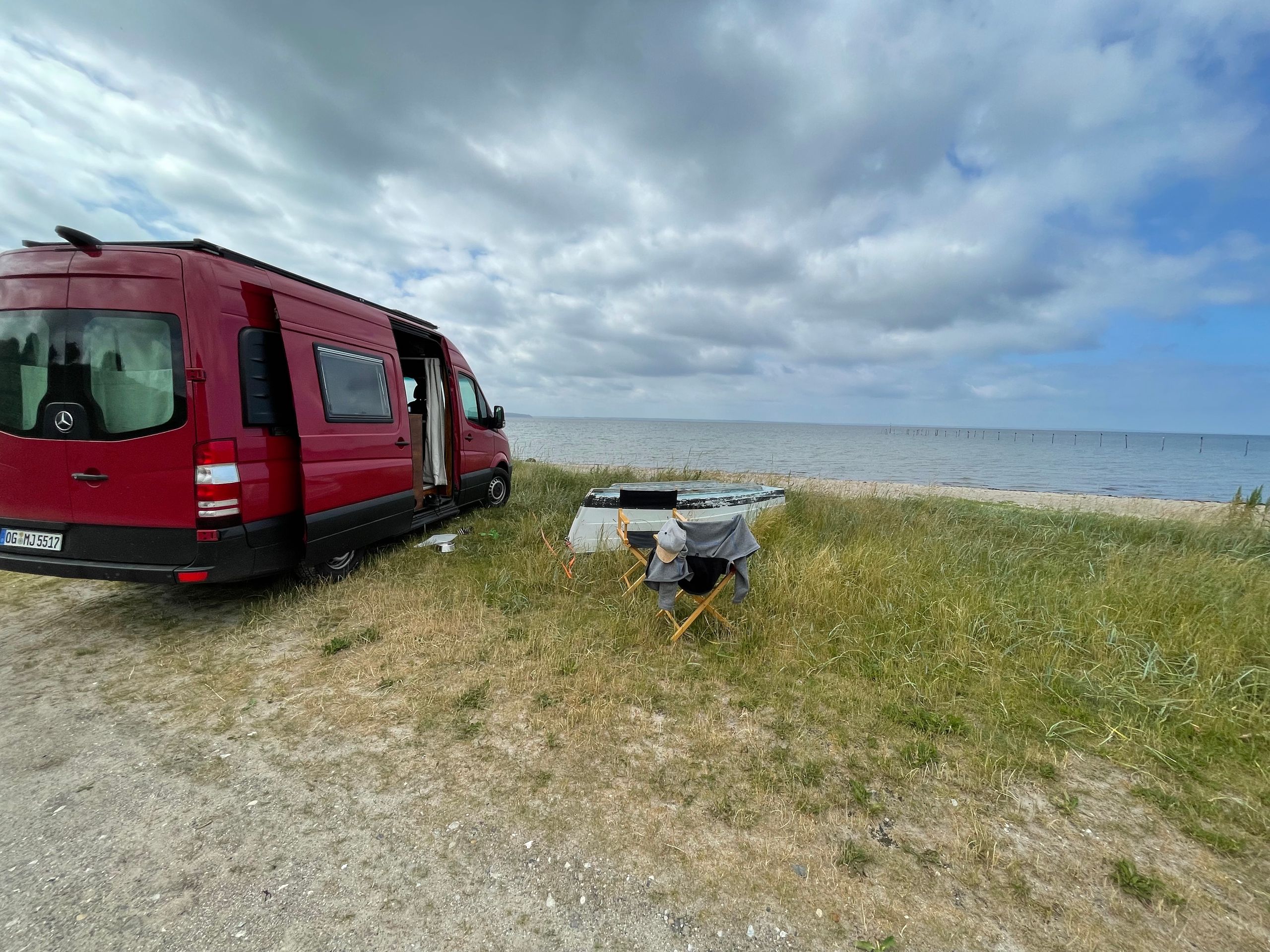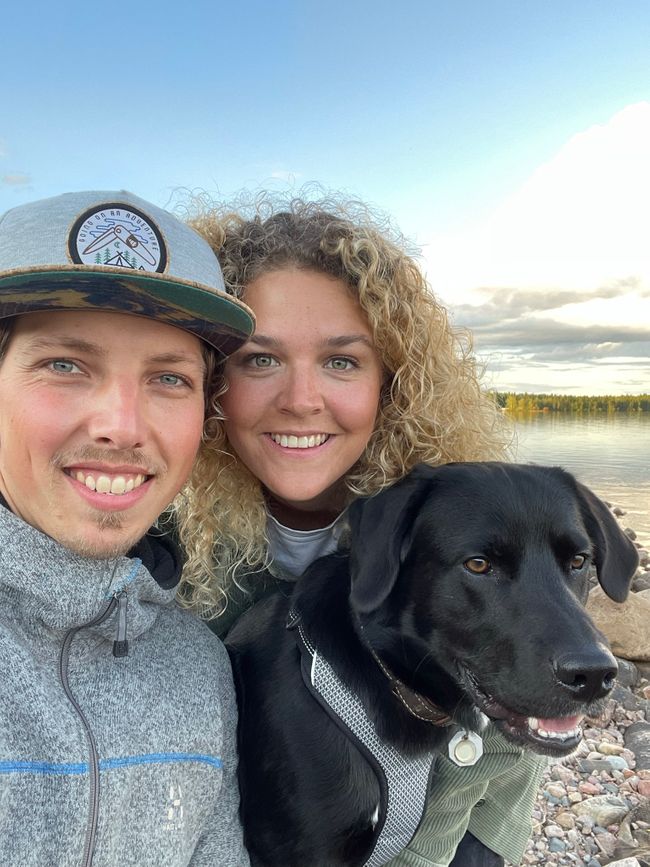Lofoten <3
Publisert: 04.08.2021
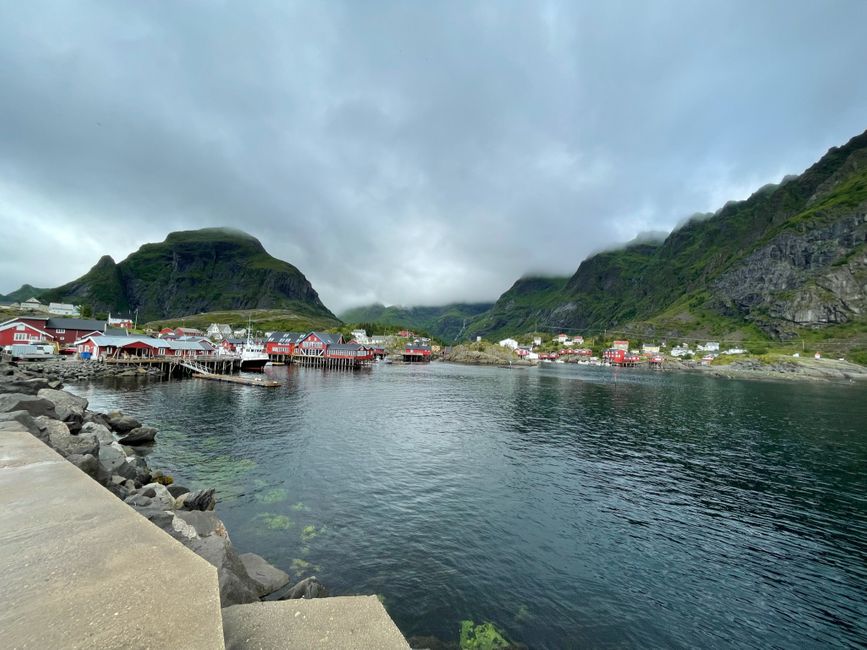
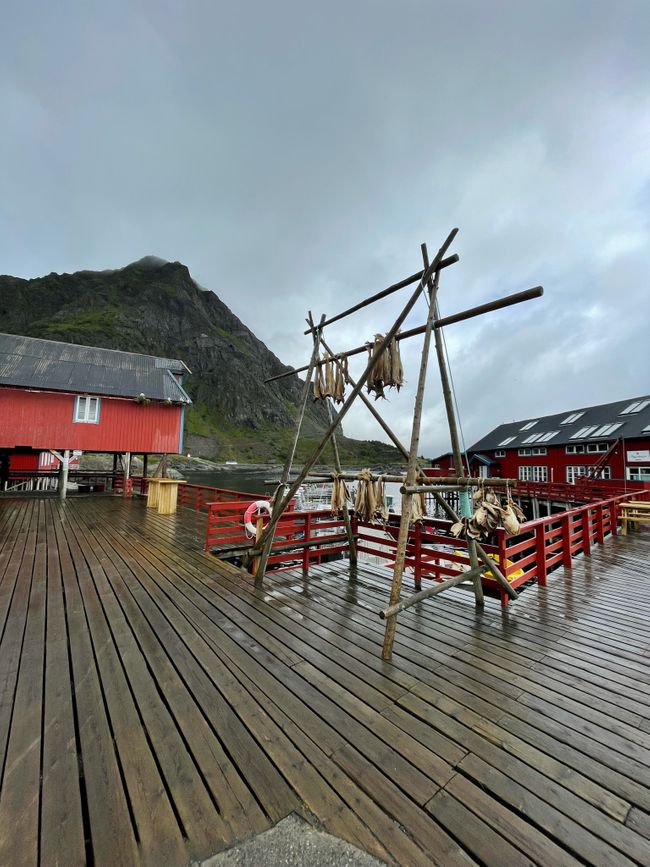
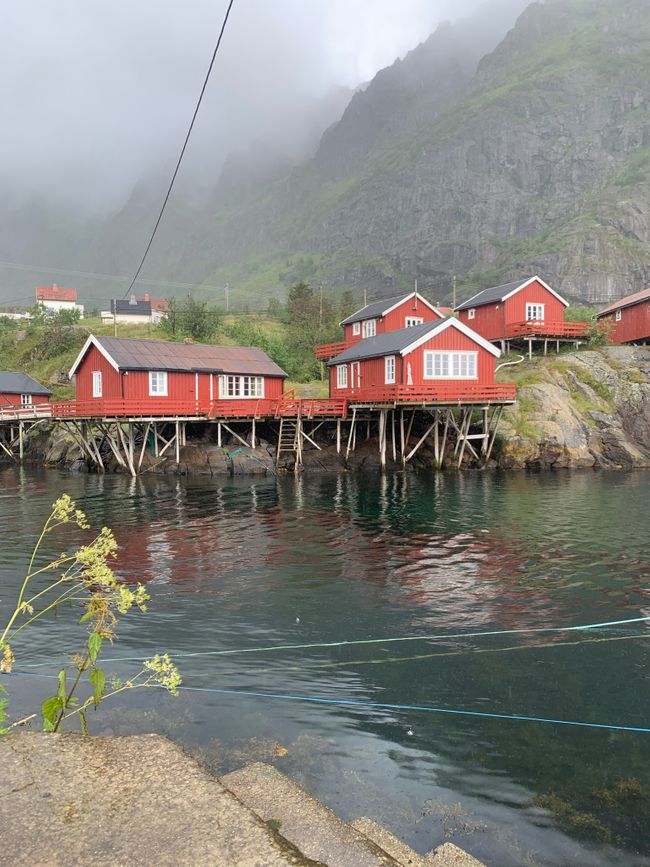
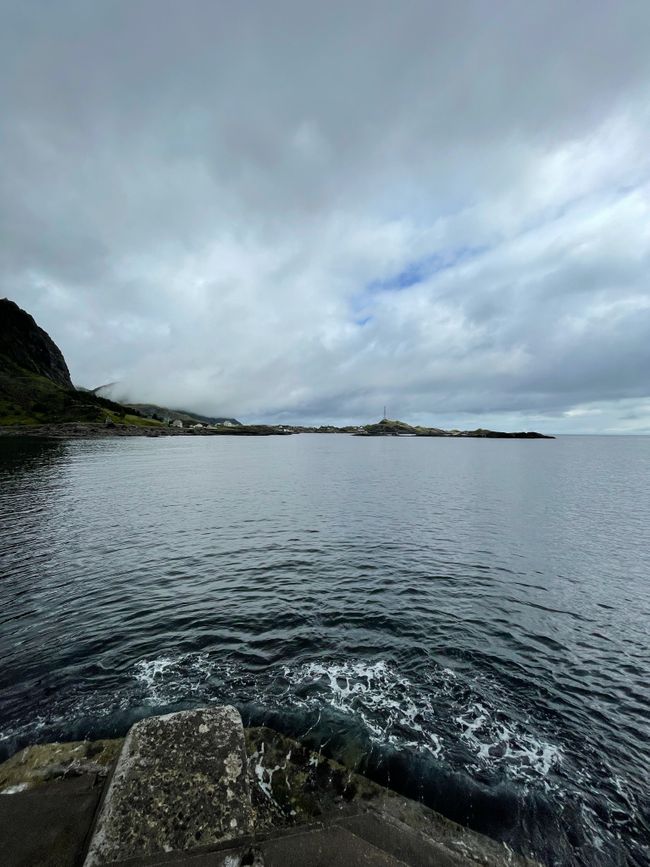
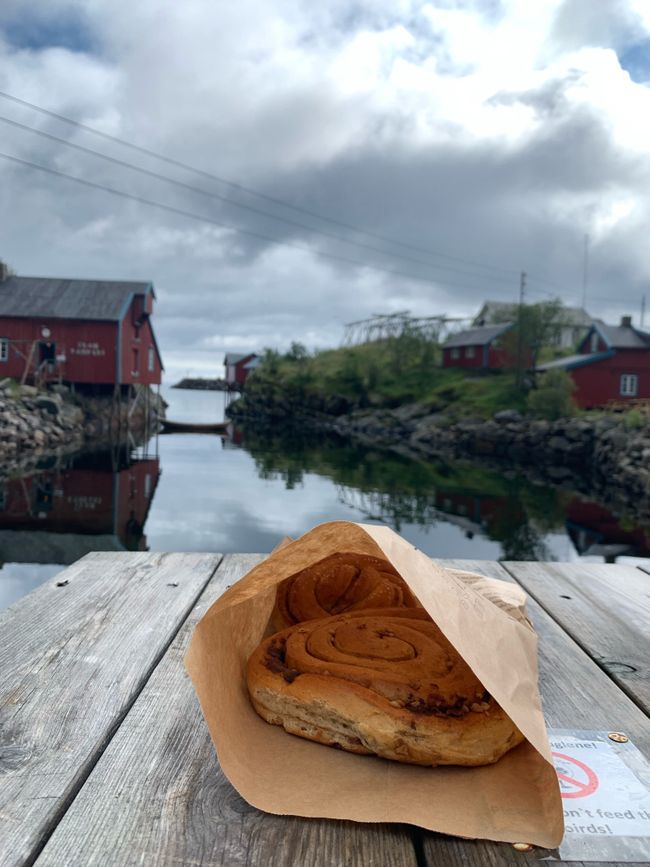
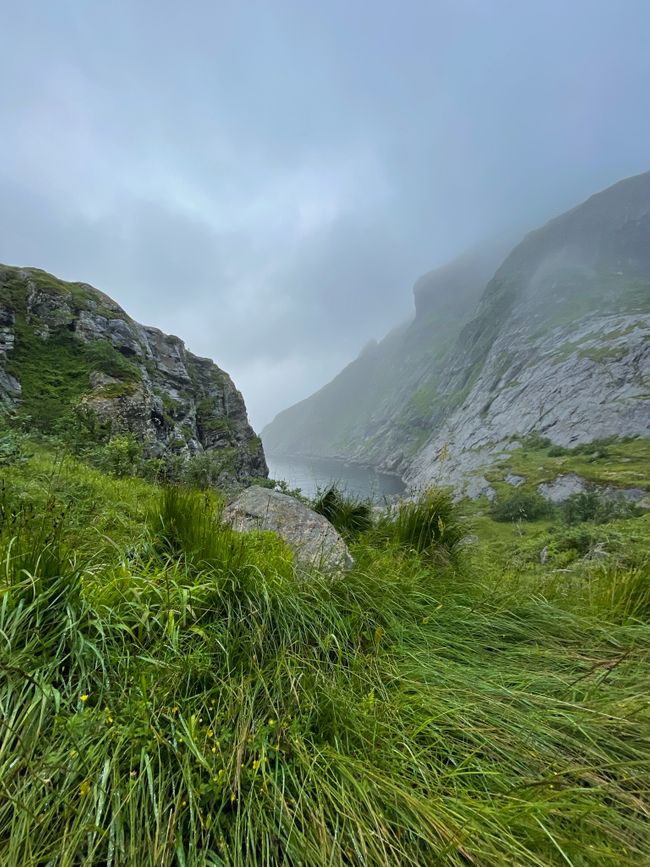
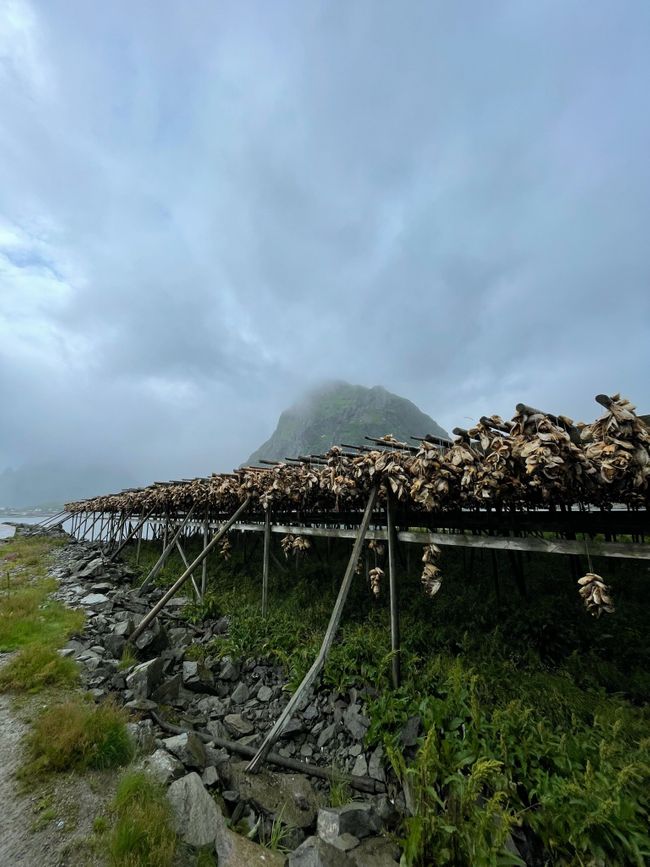
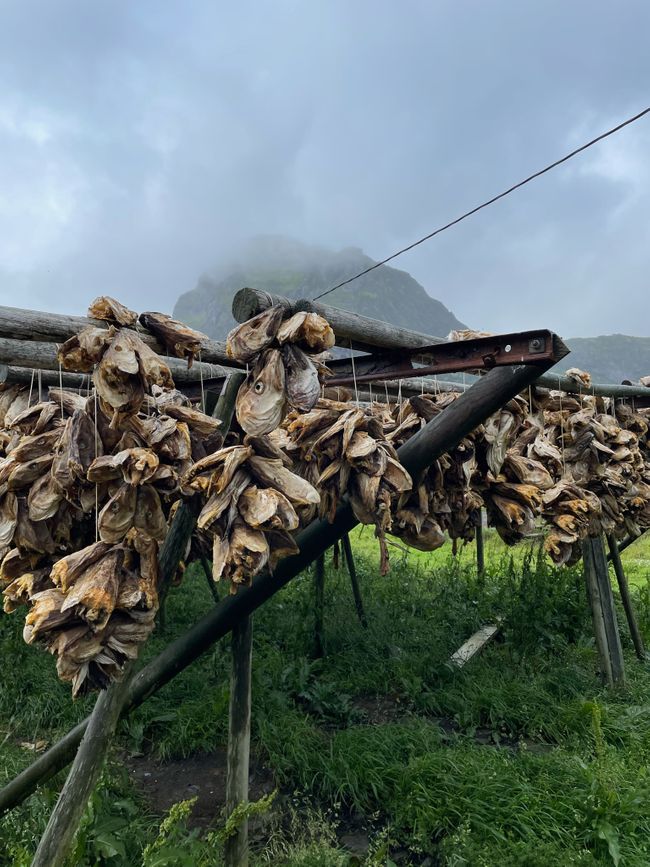
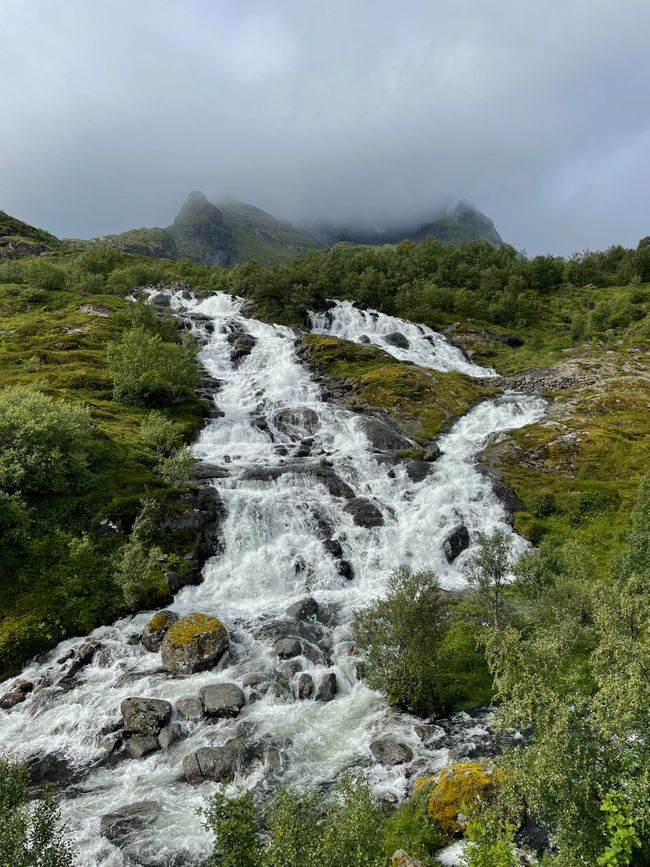
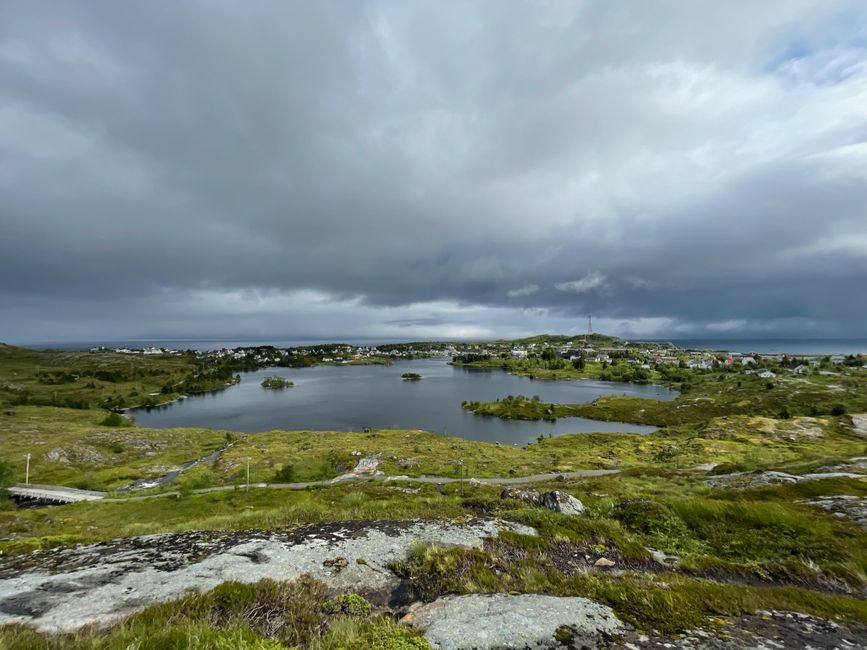
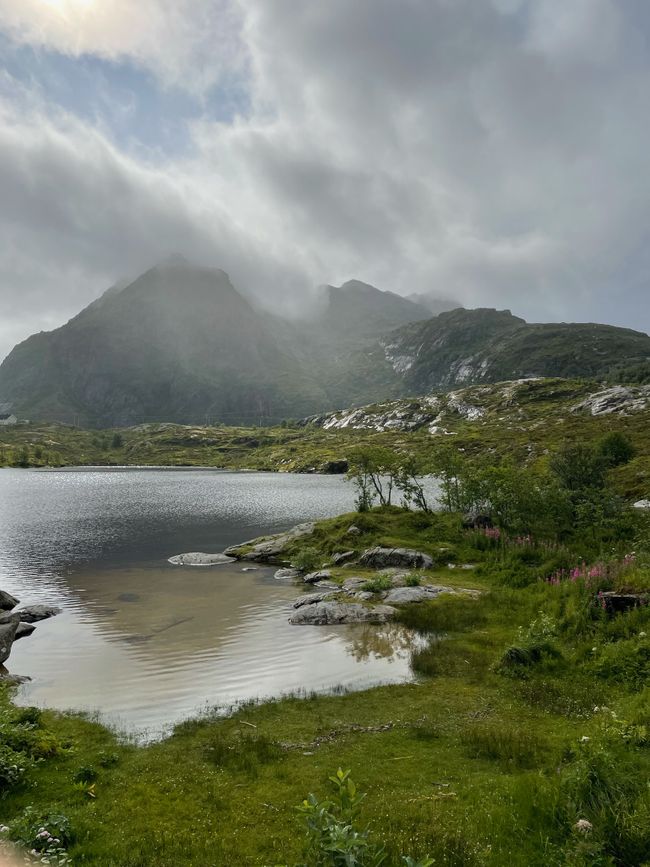
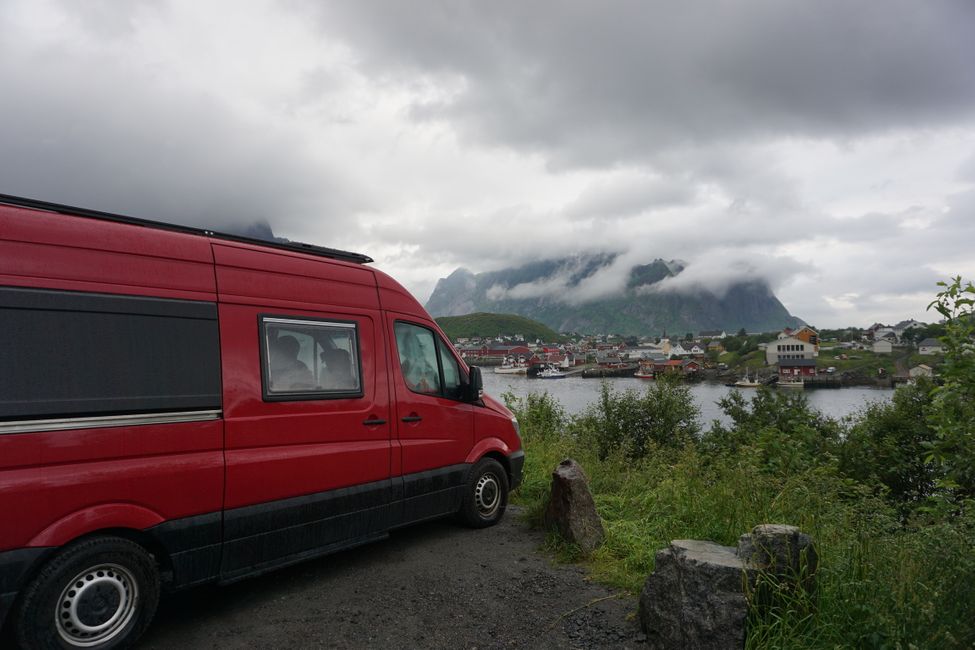
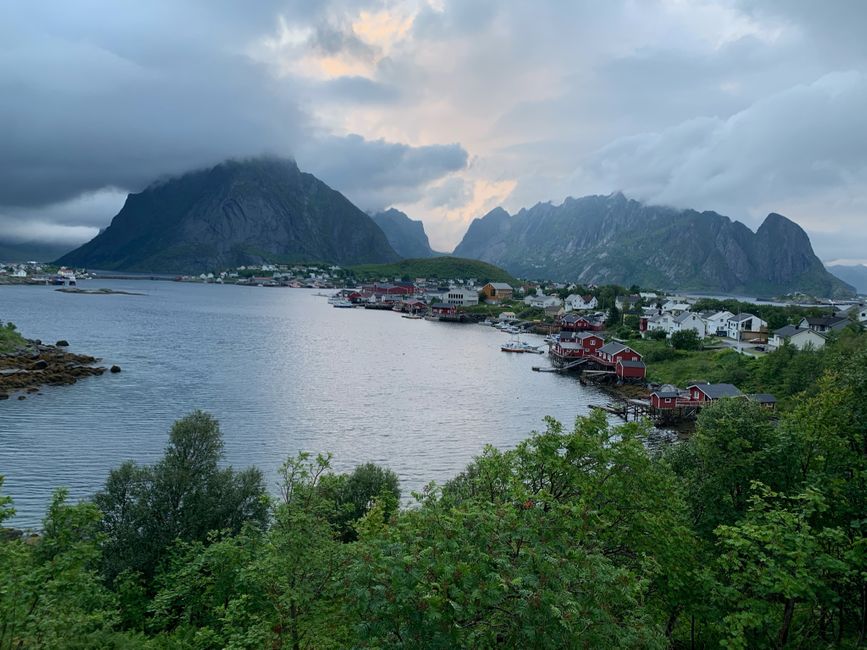
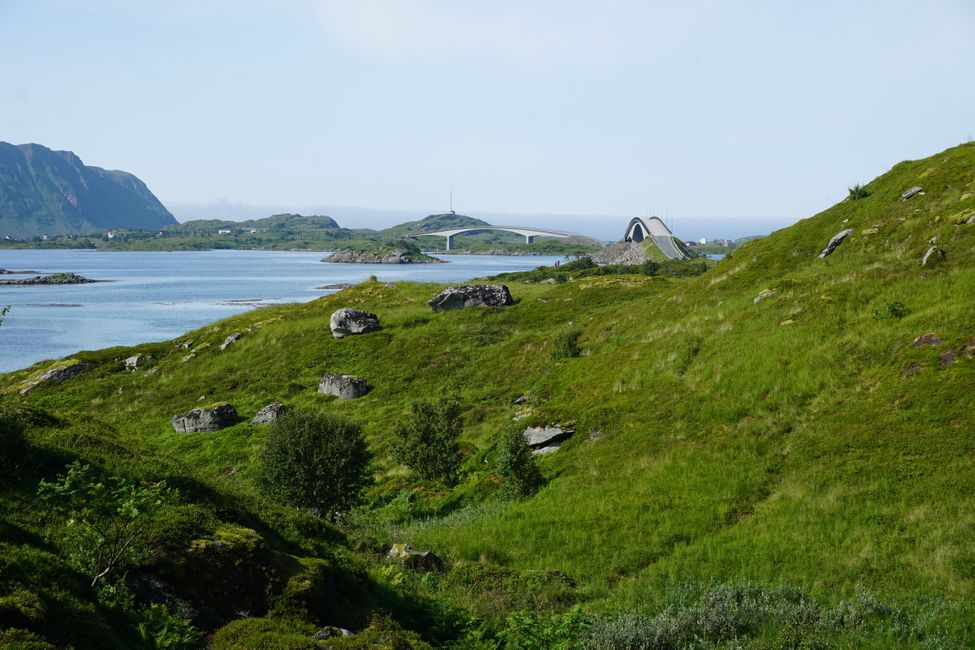
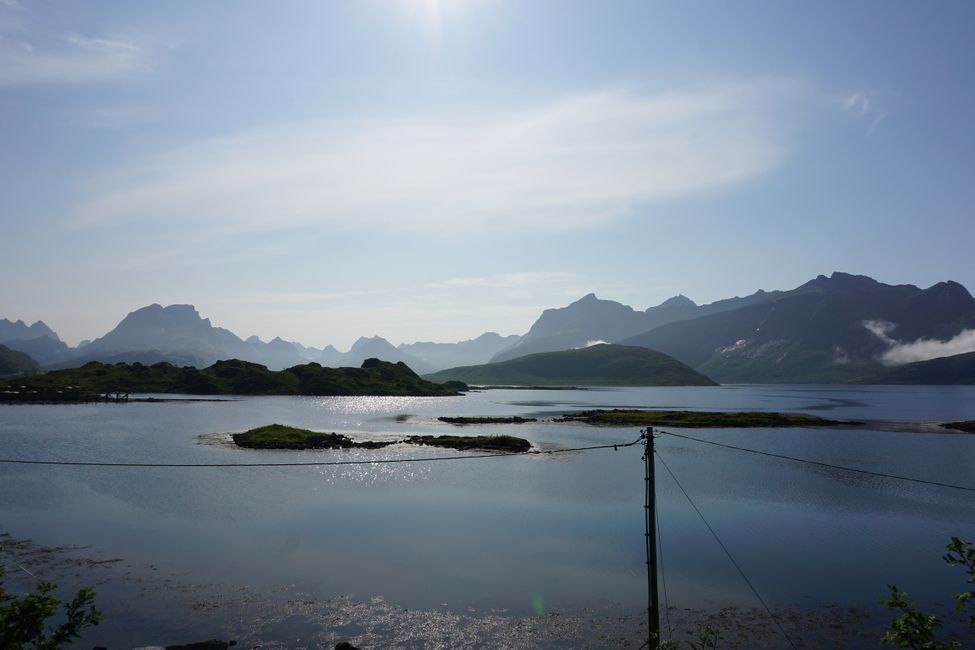
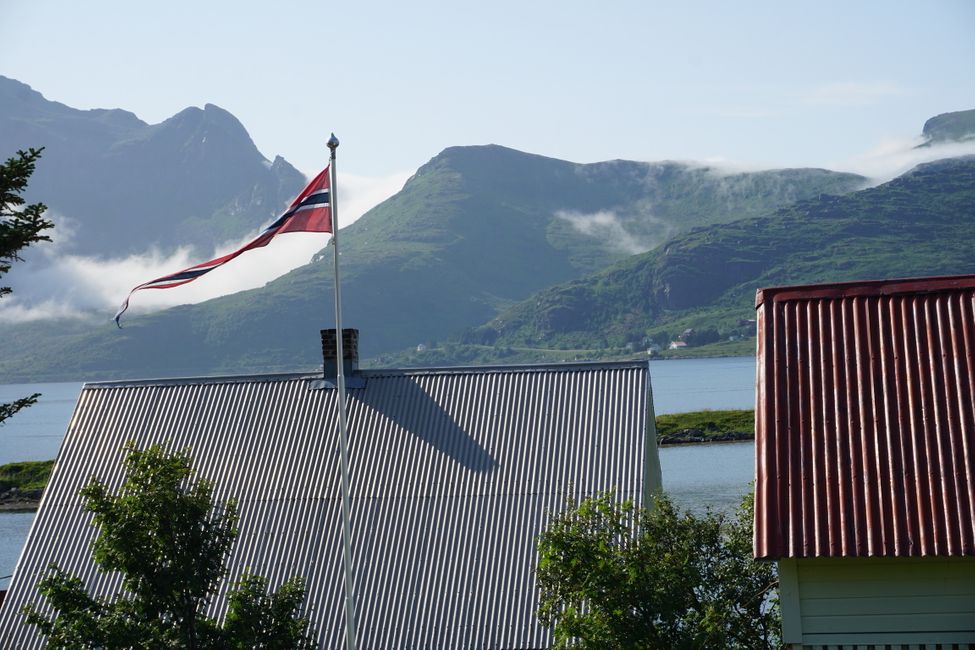
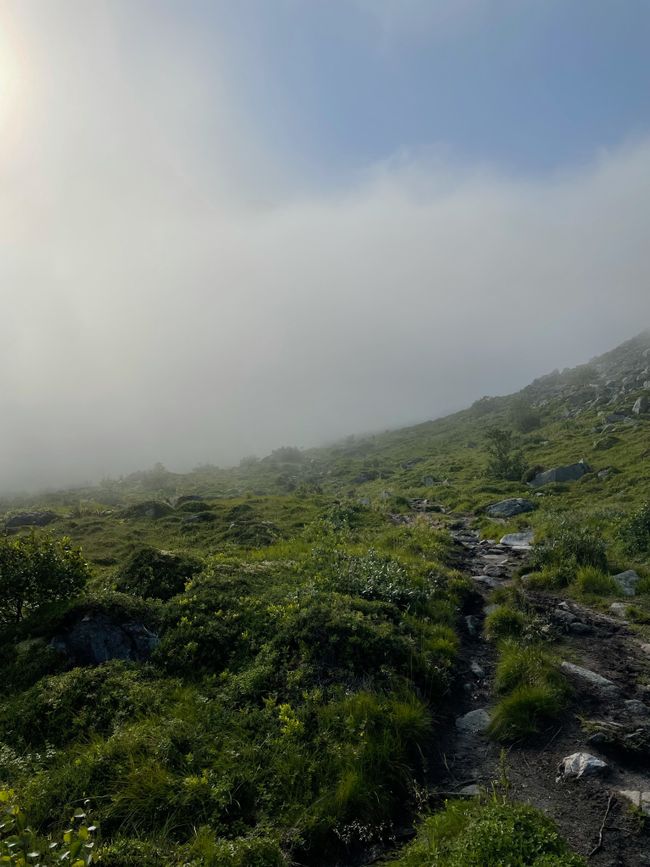
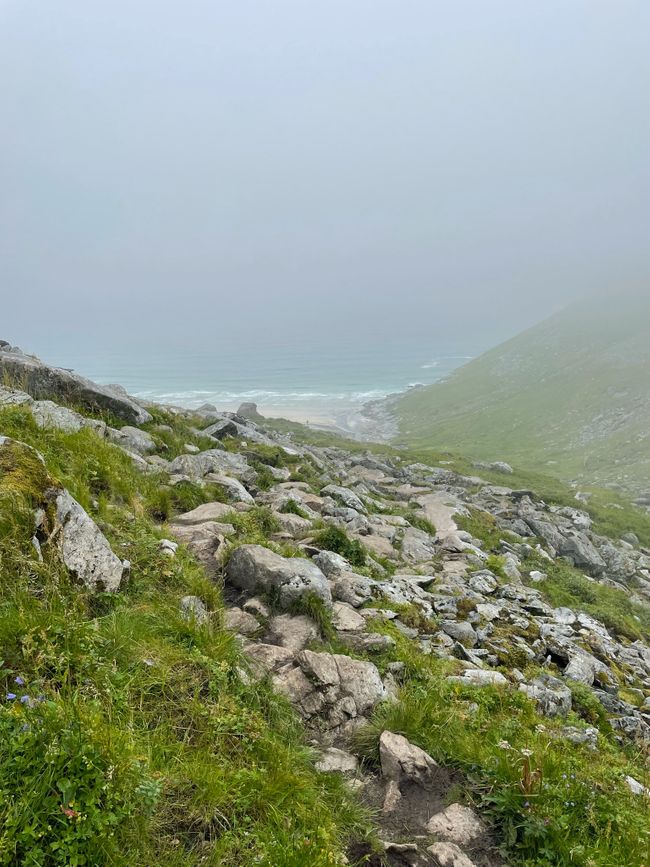
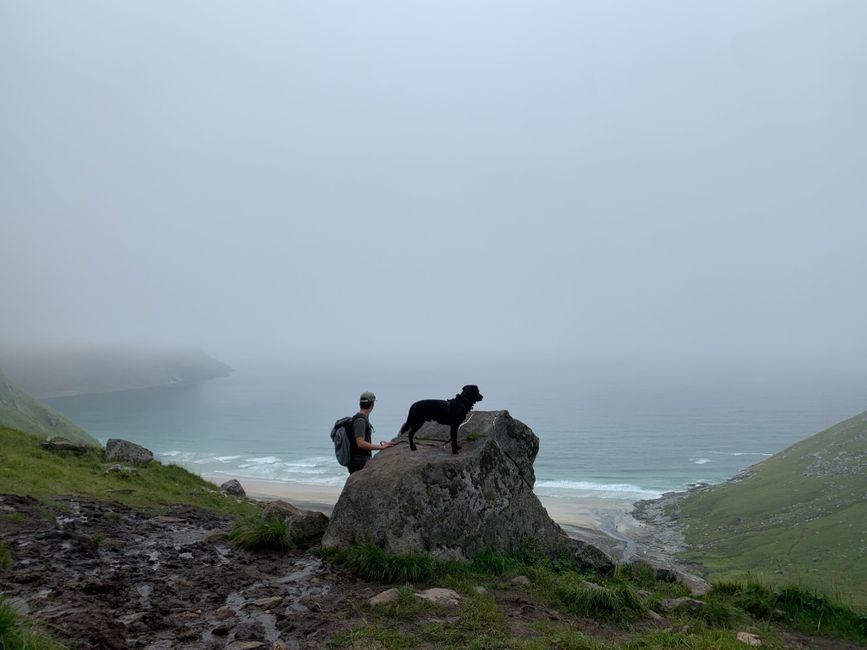
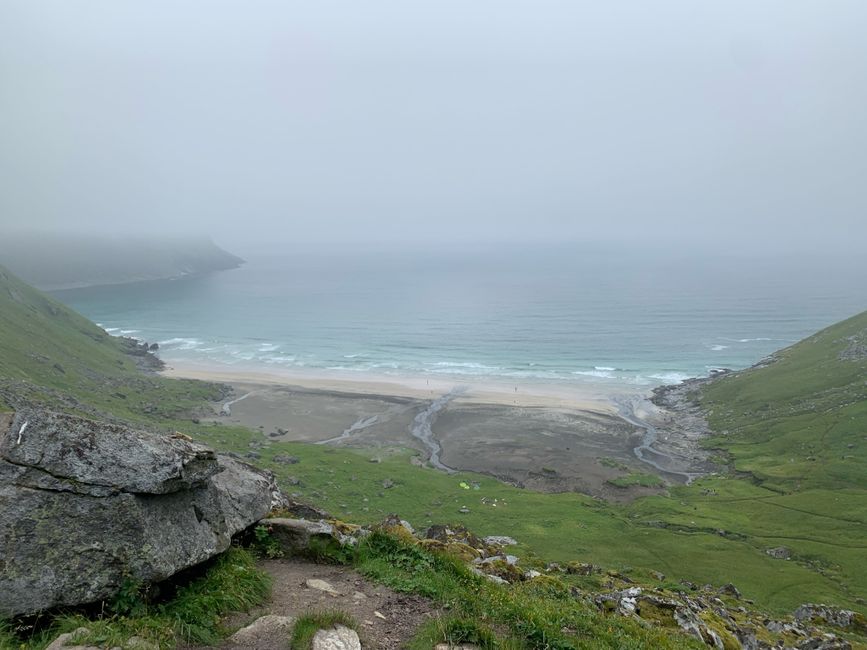
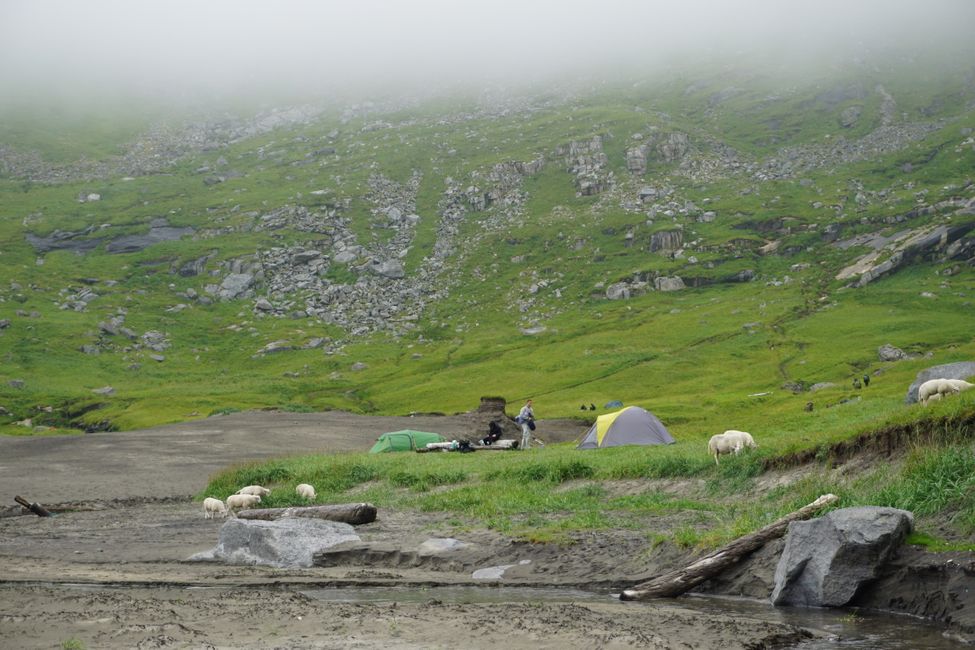
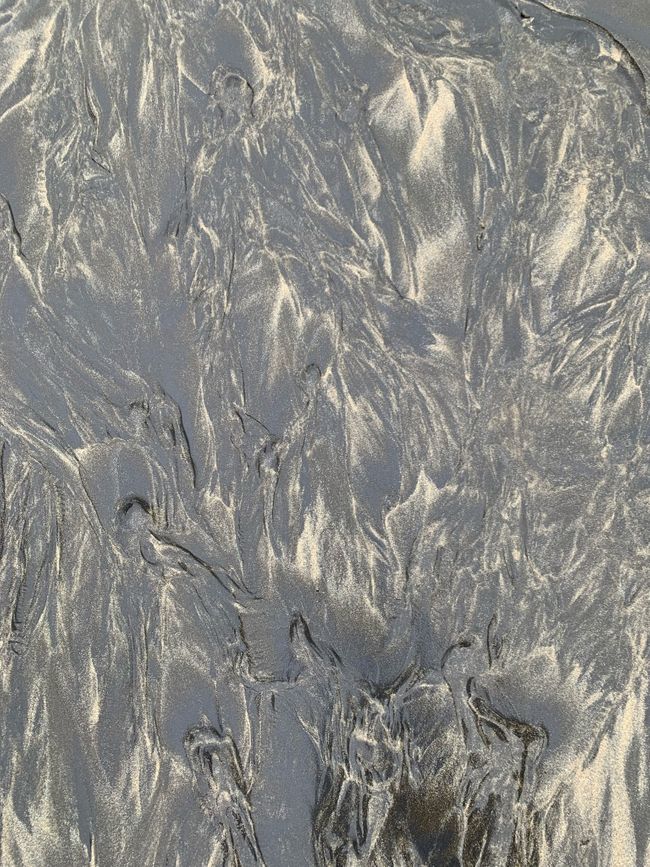
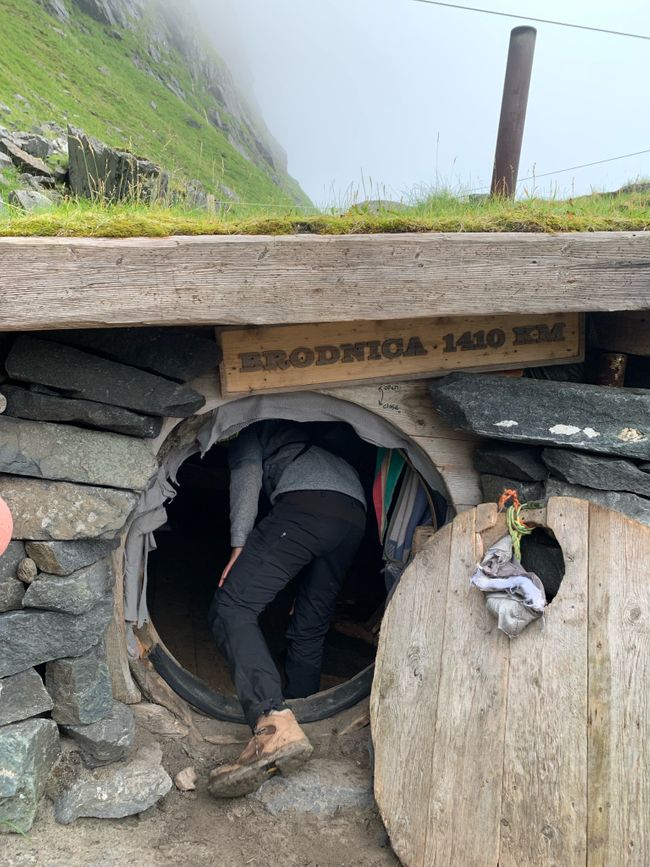
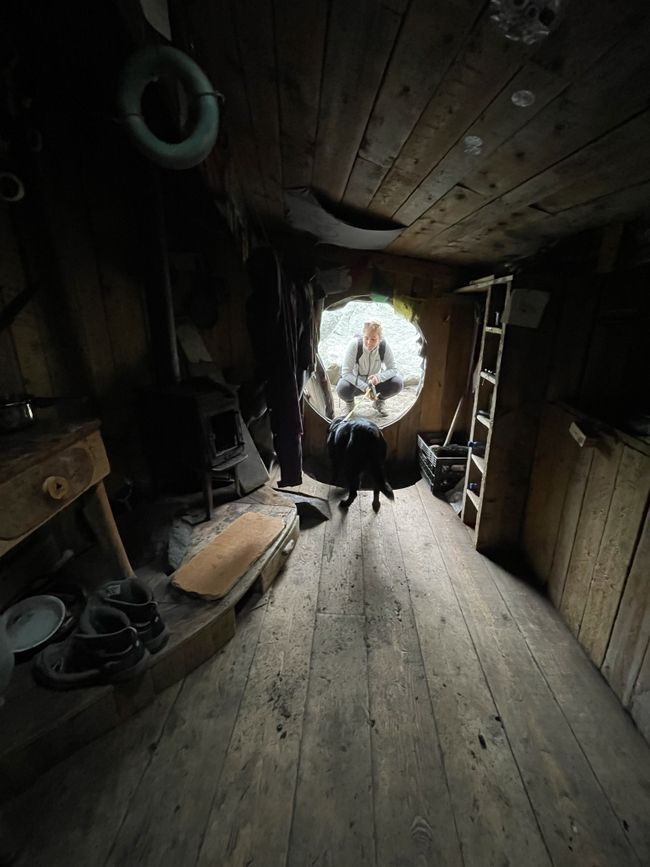
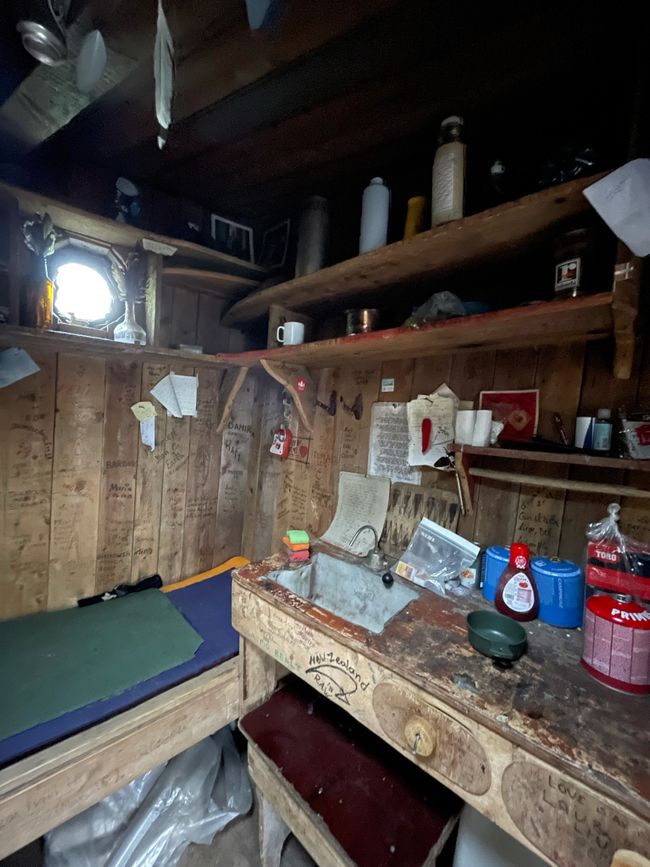
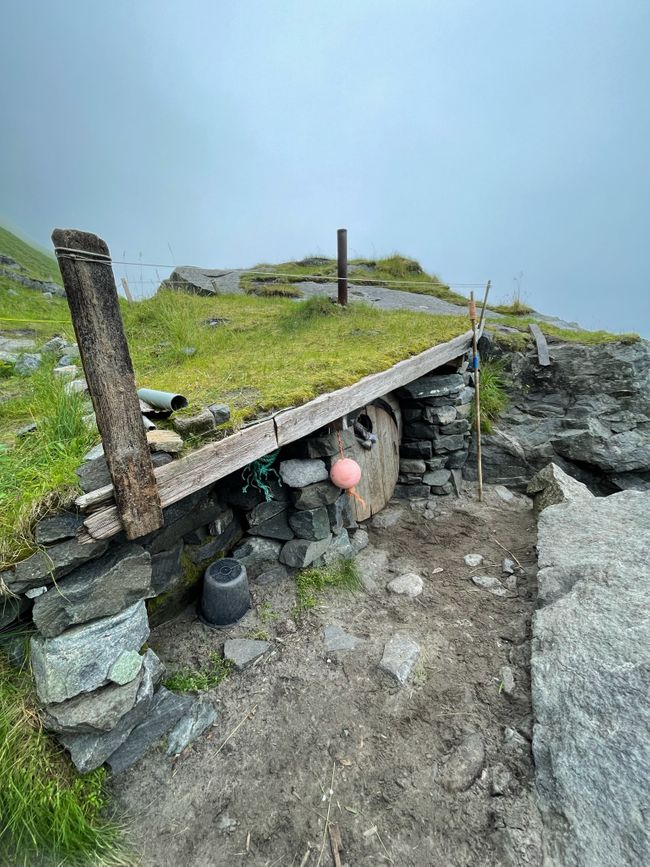
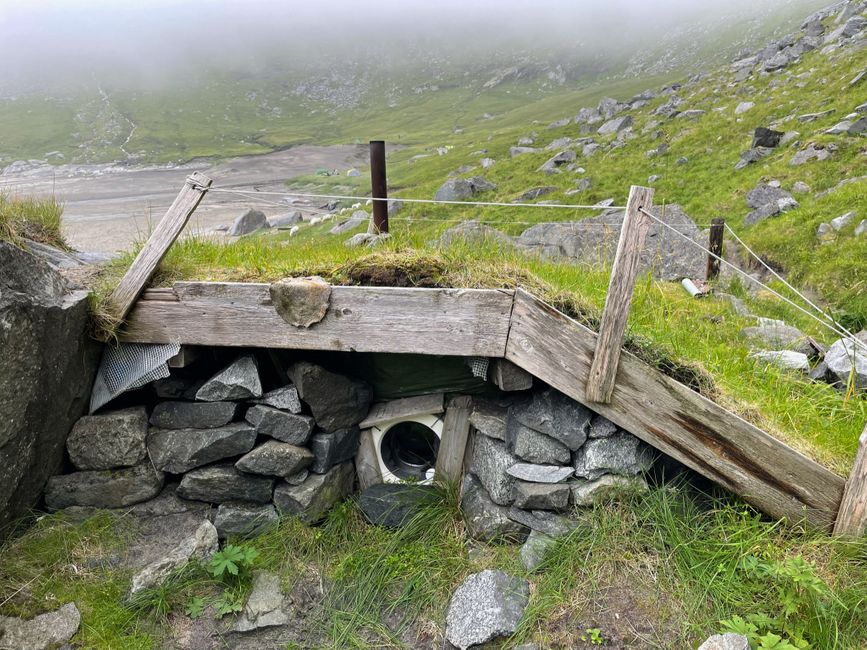
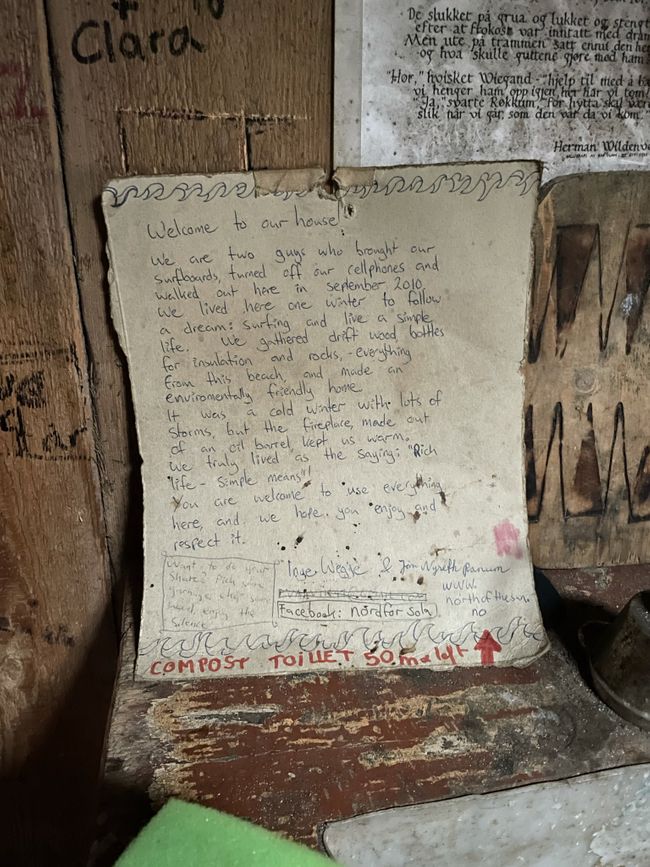
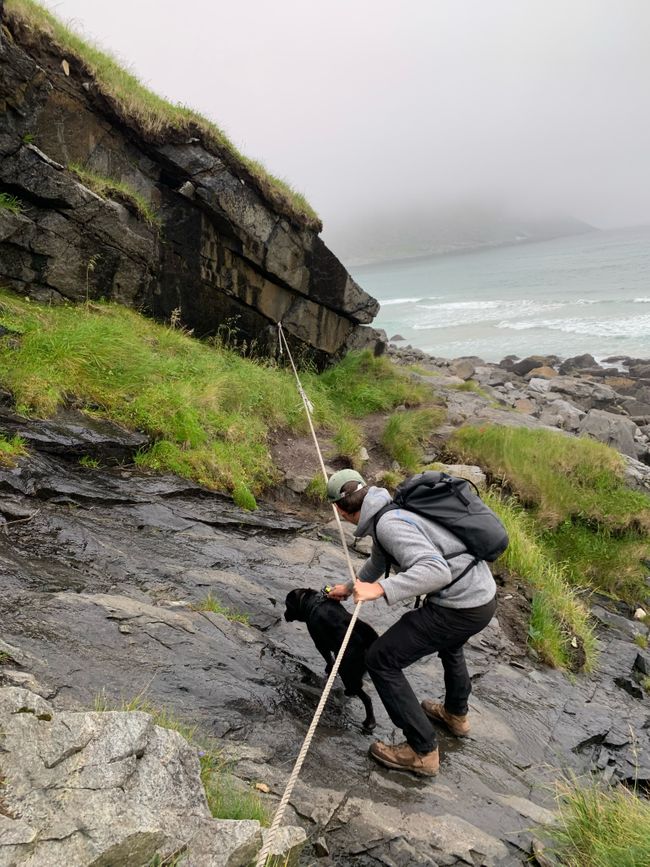
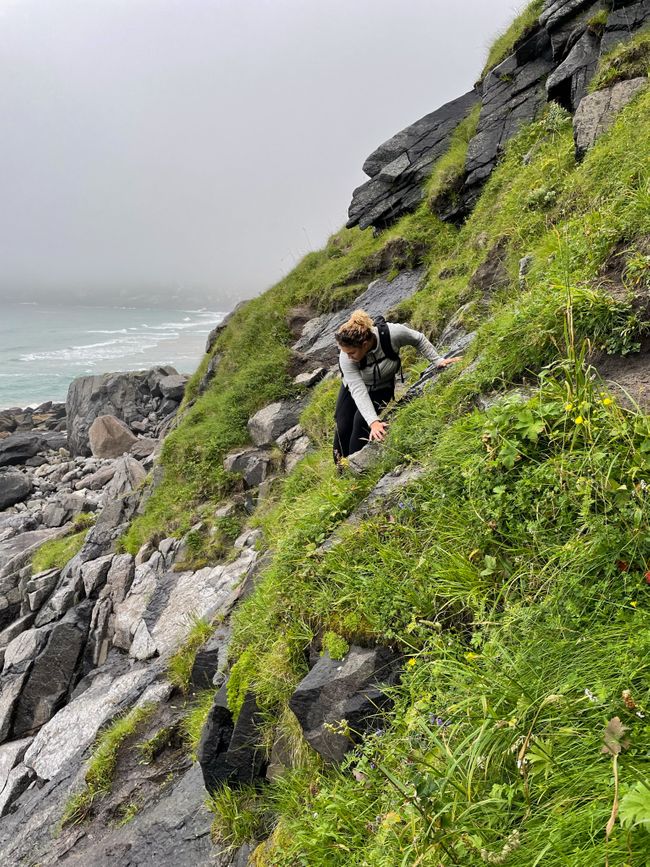
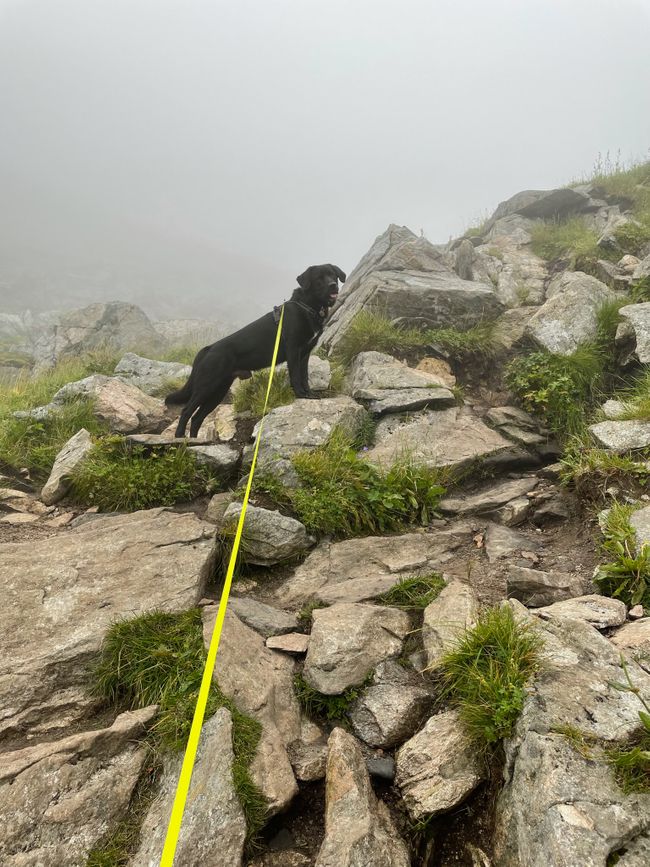
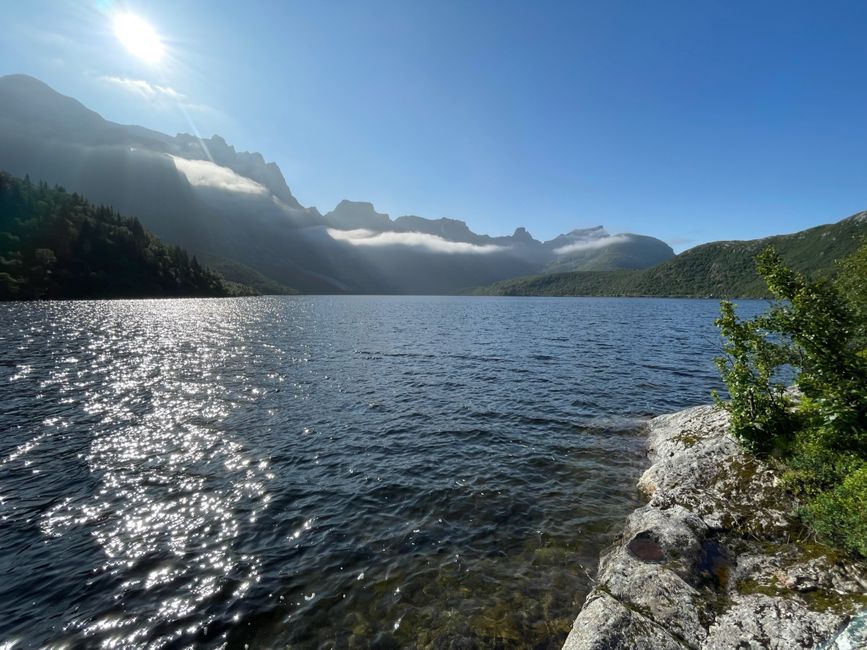
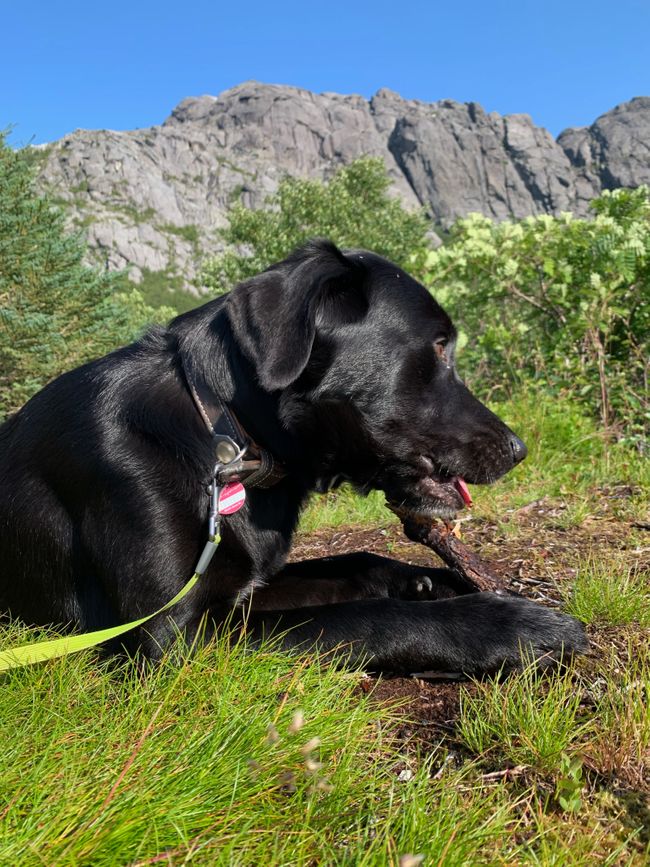
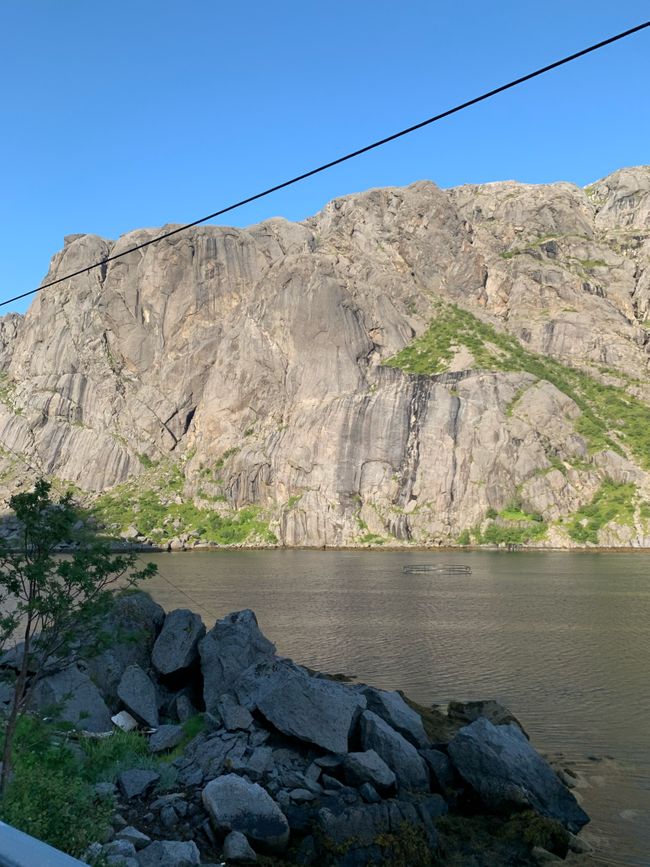
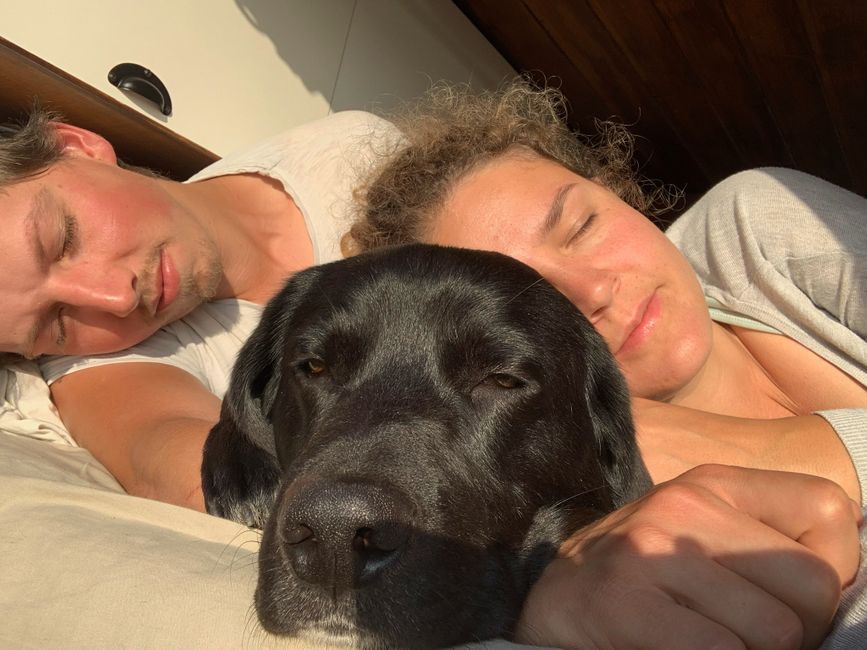
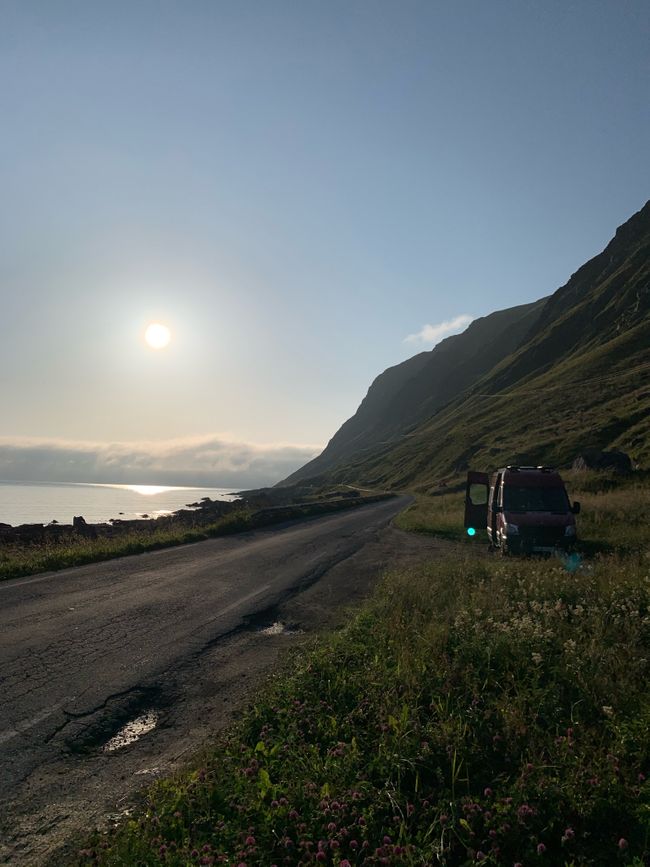
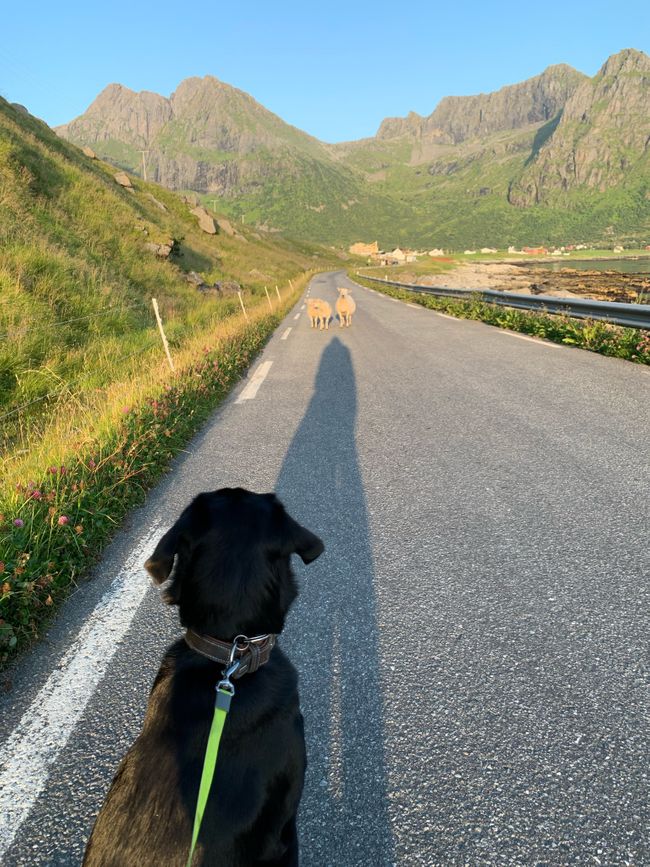
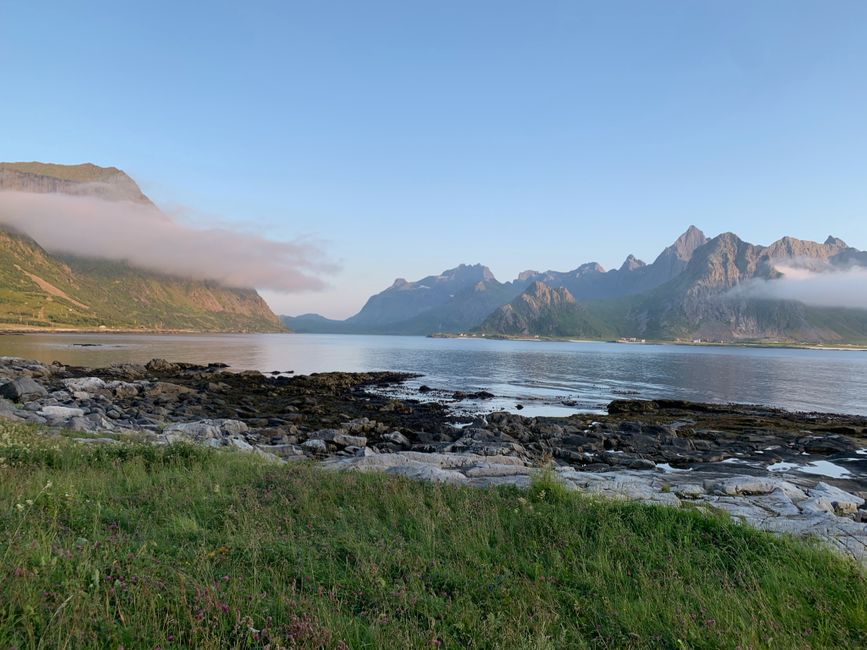
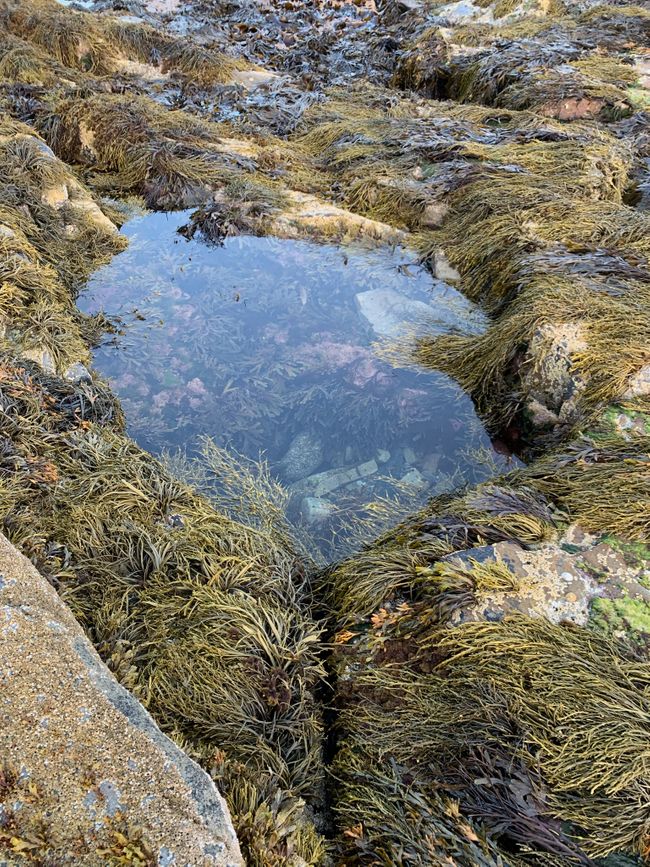
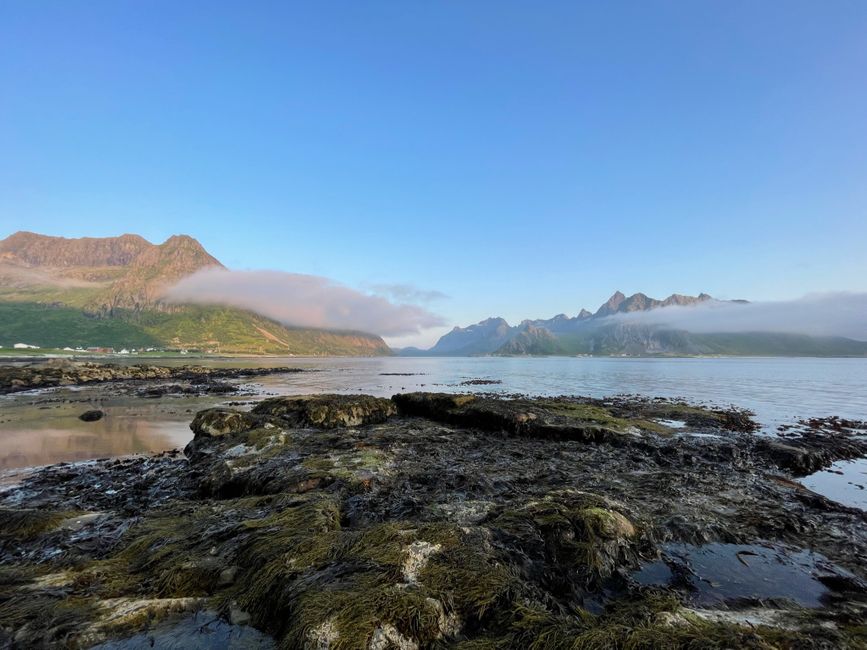
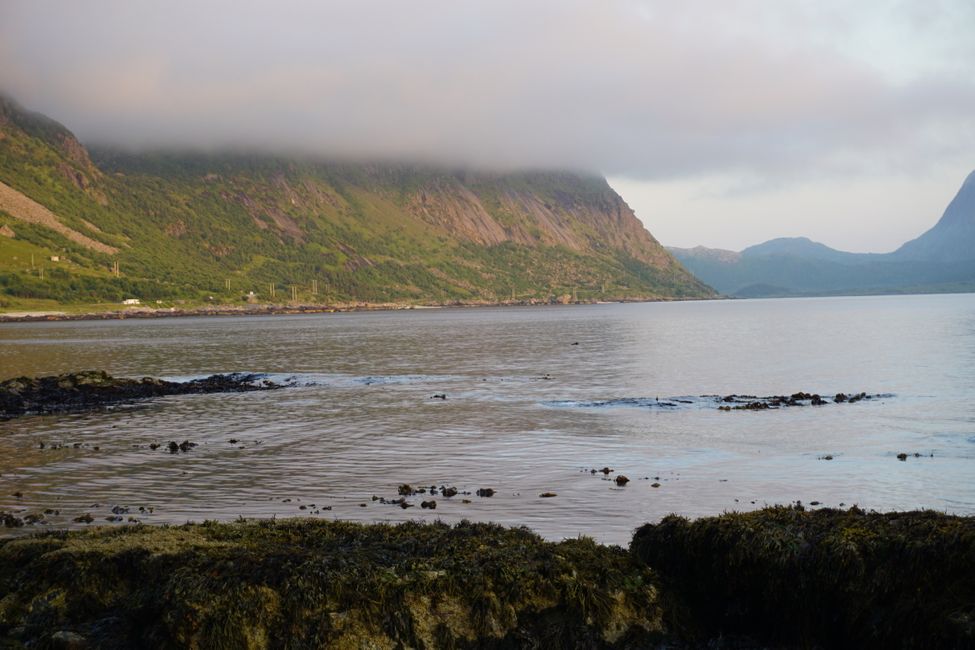
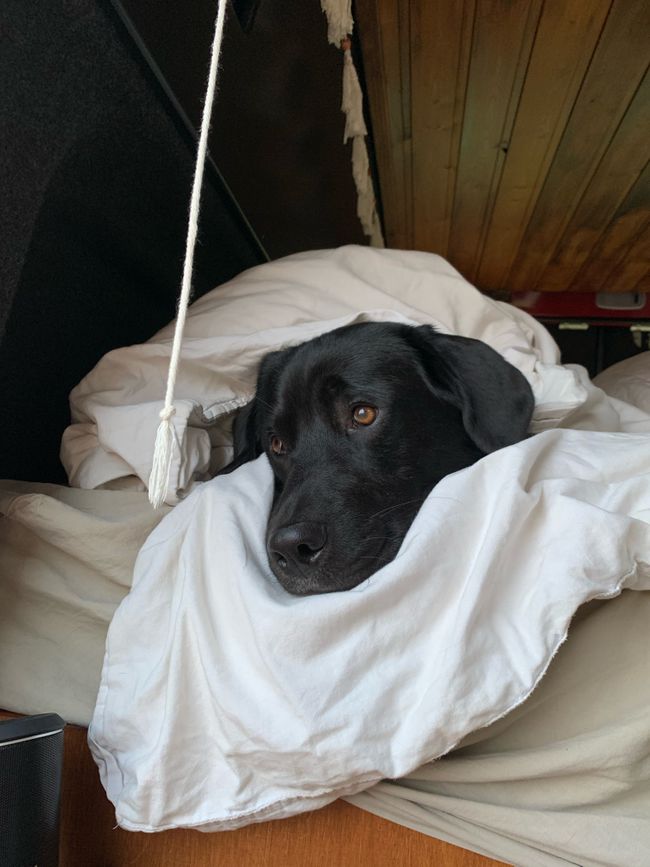
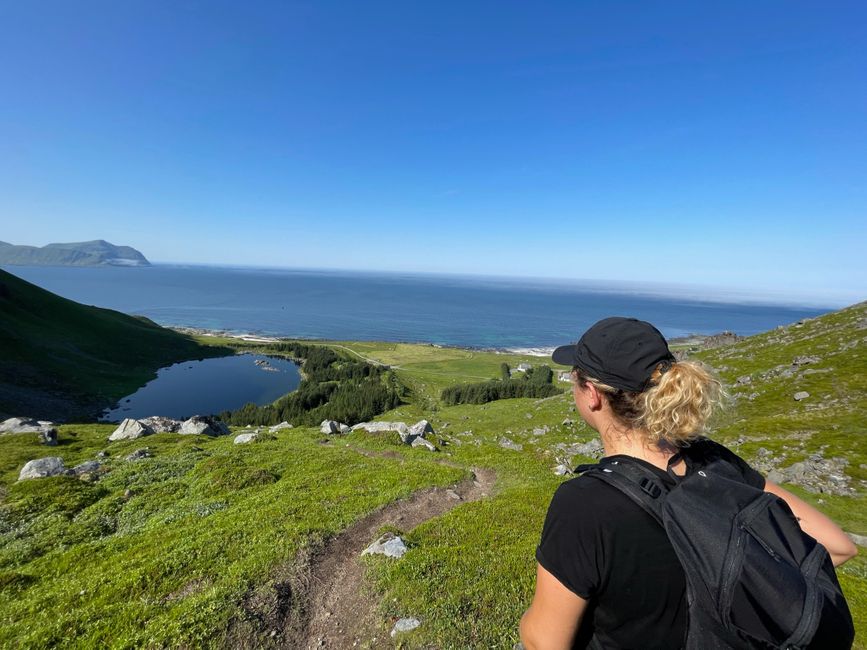
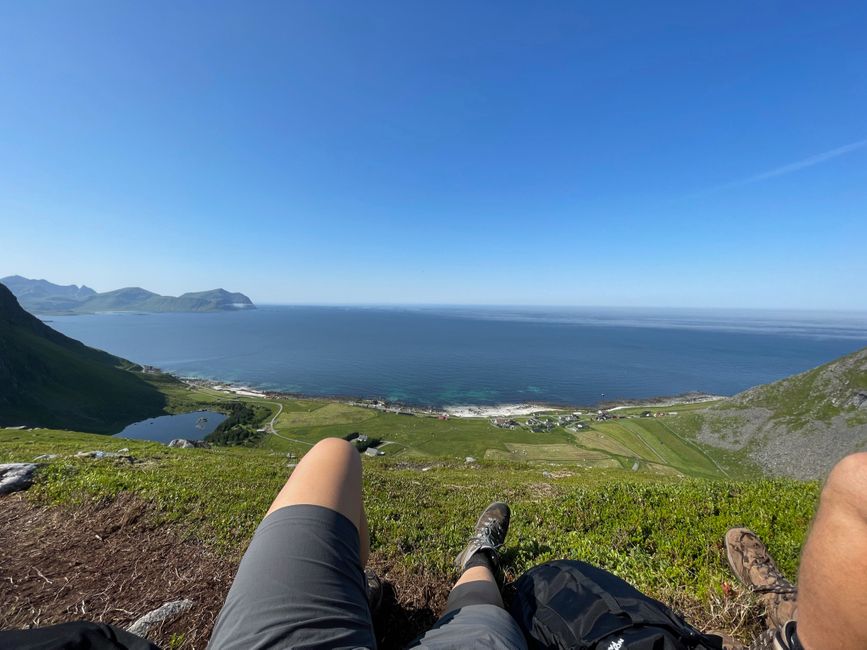
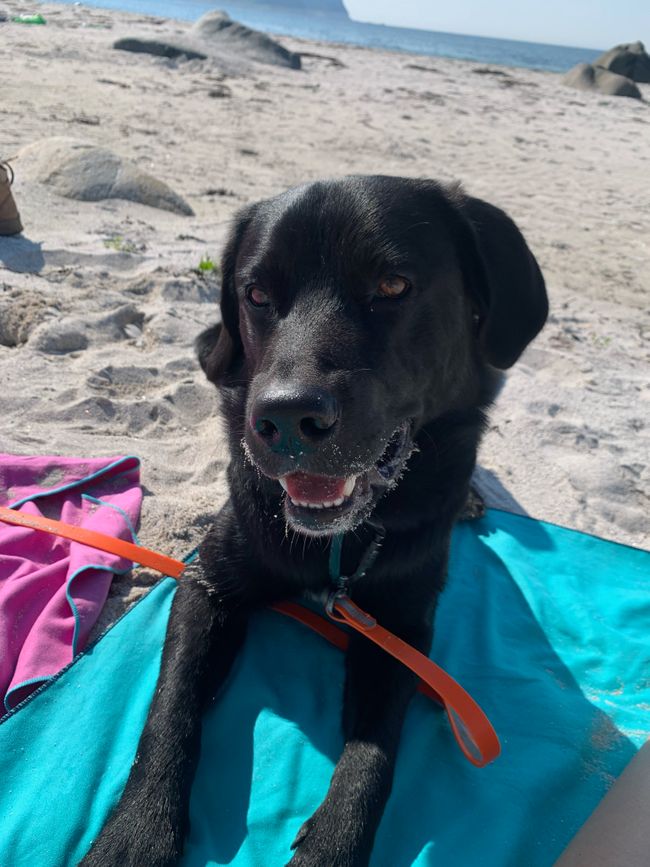
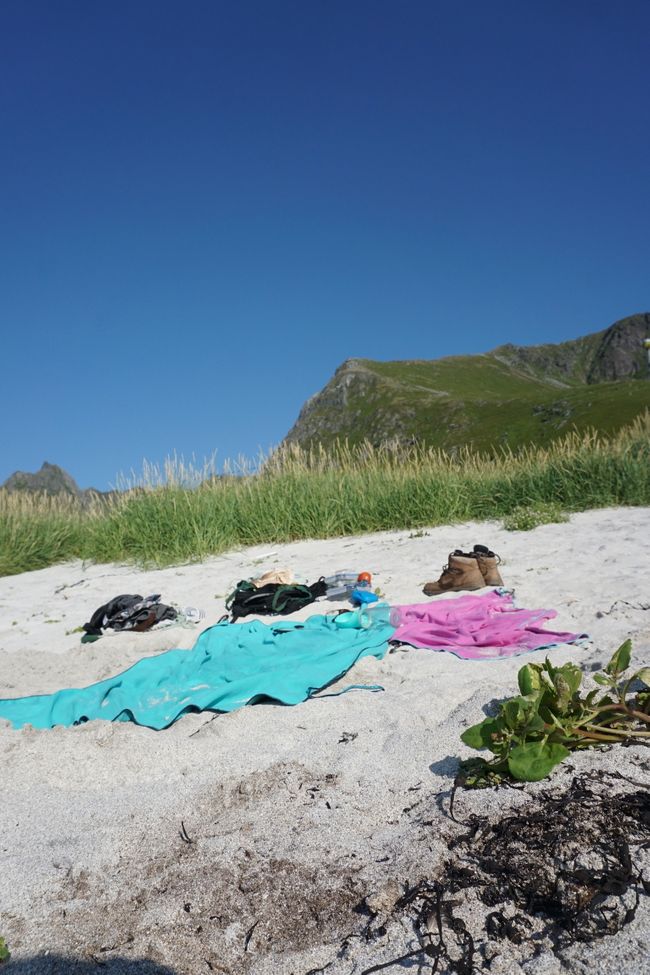
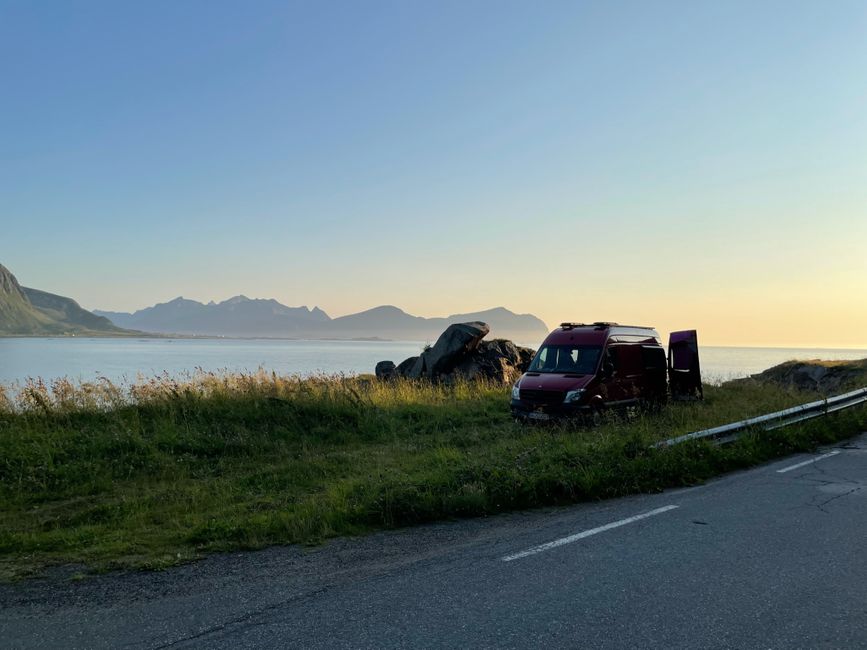
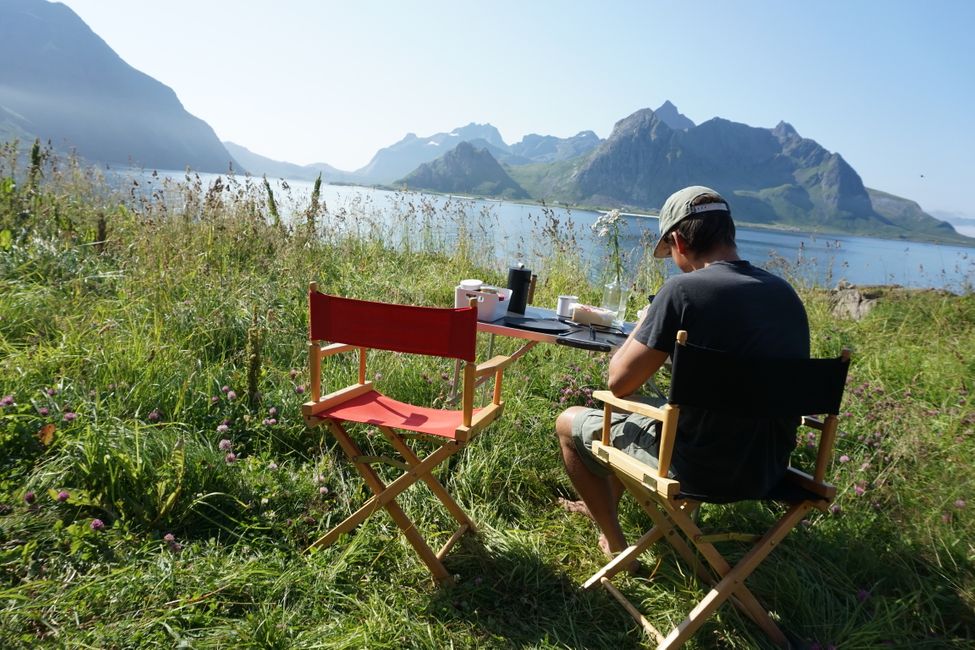
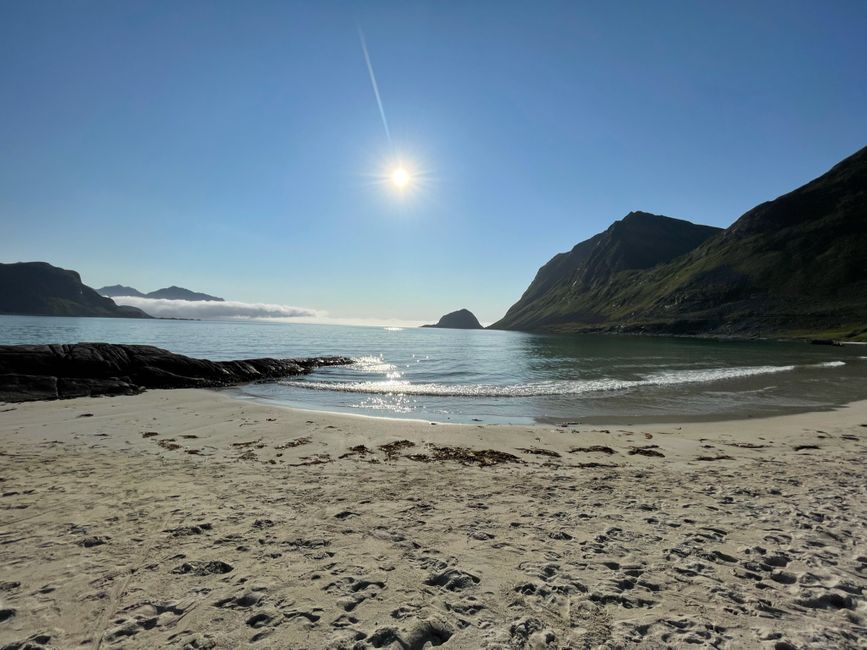
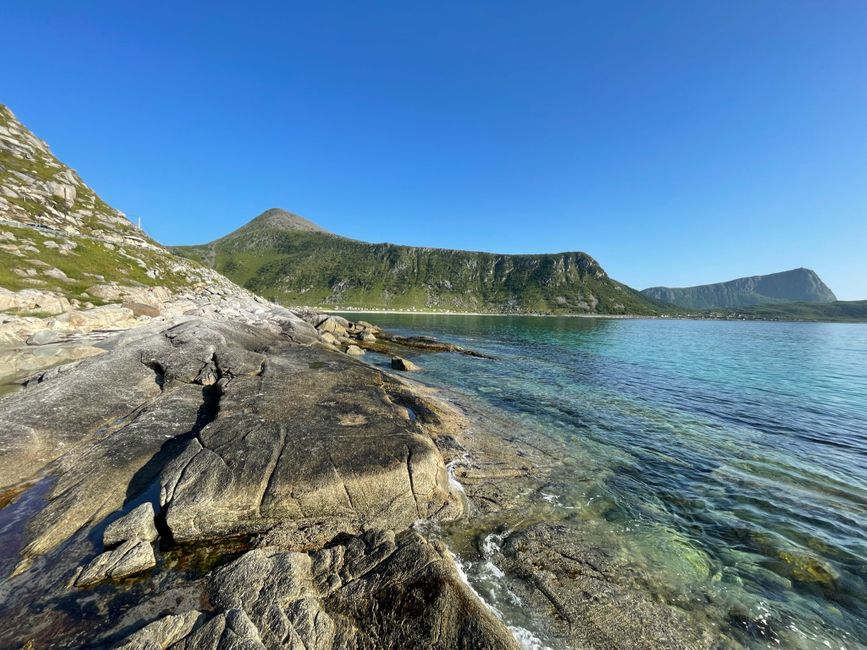
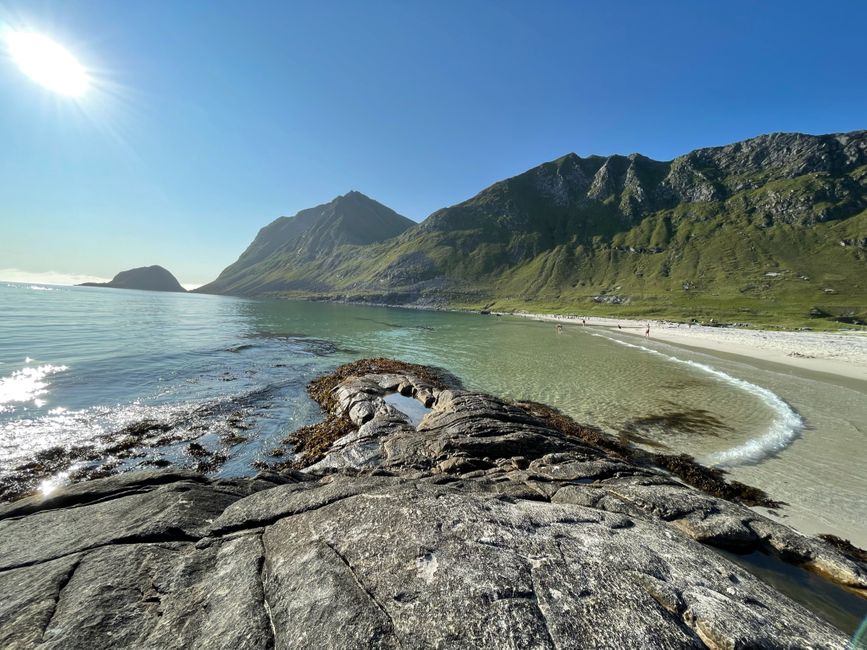
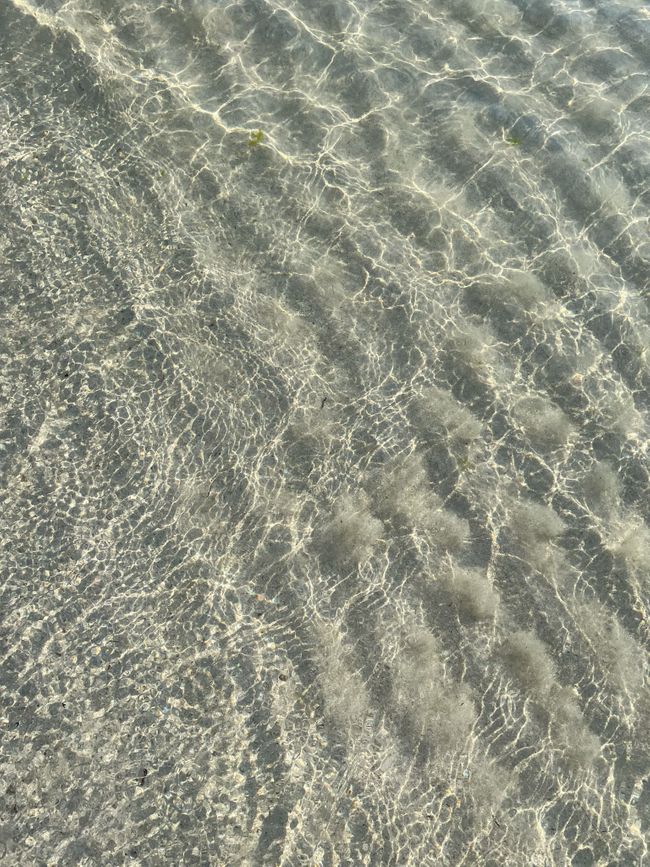
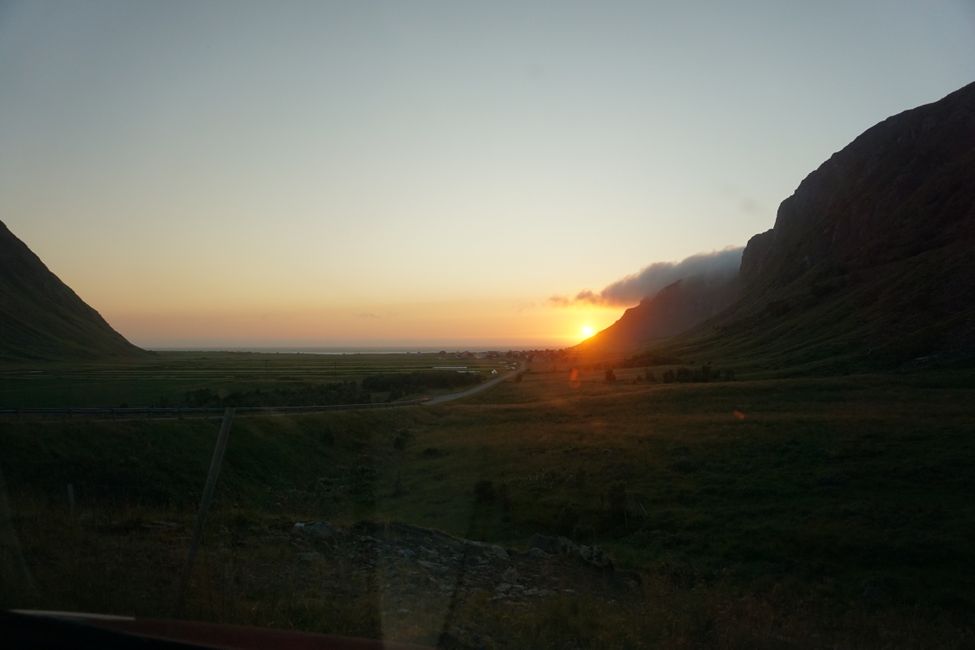
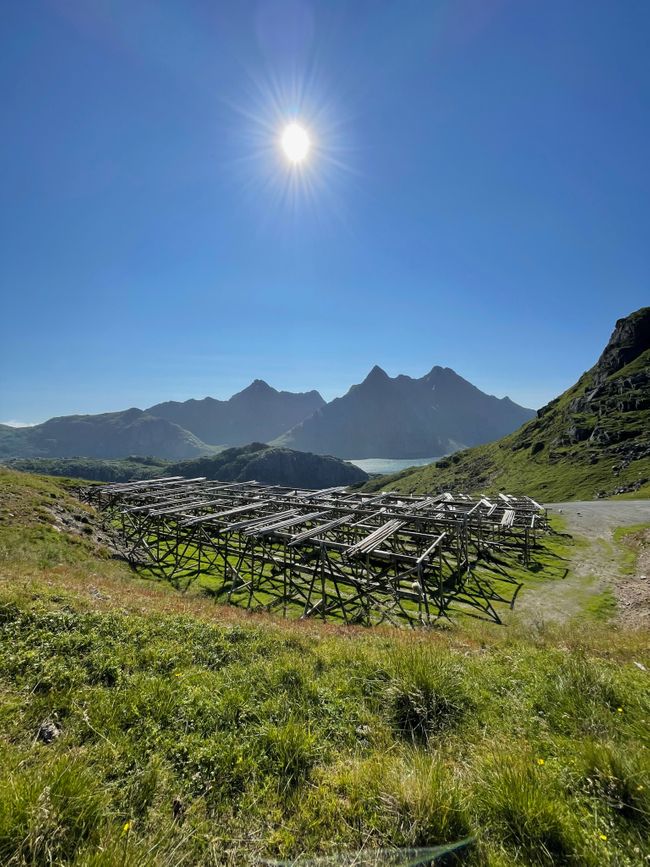
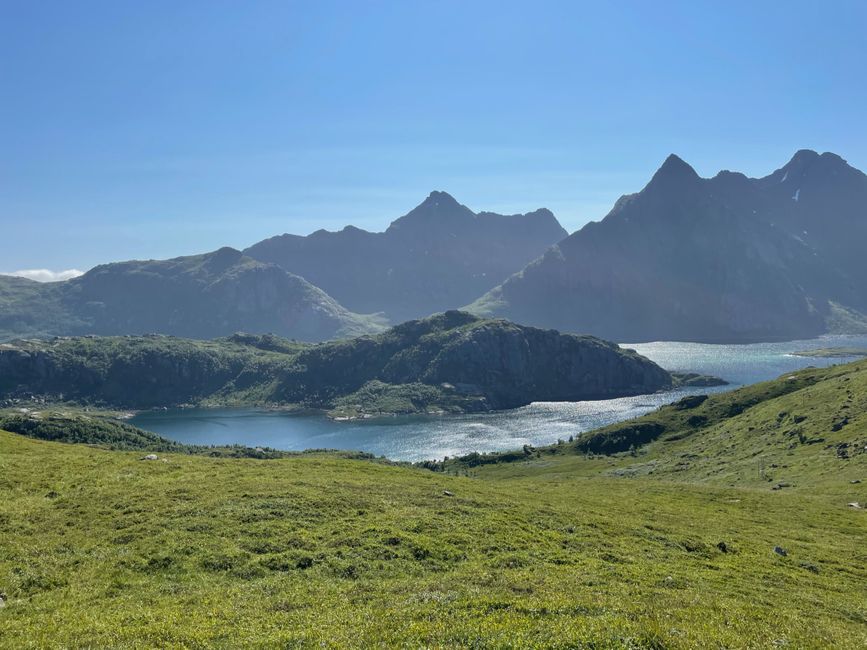
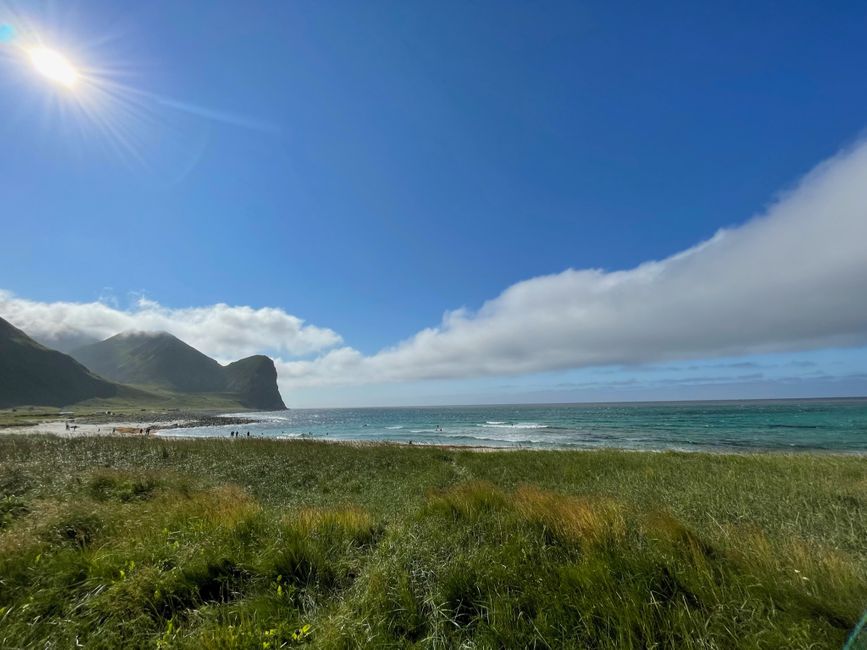
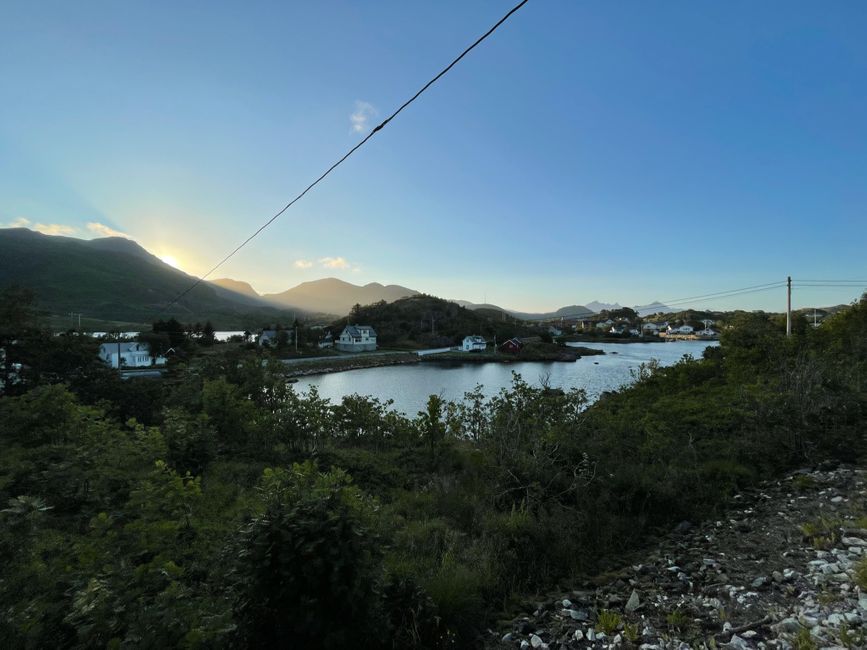
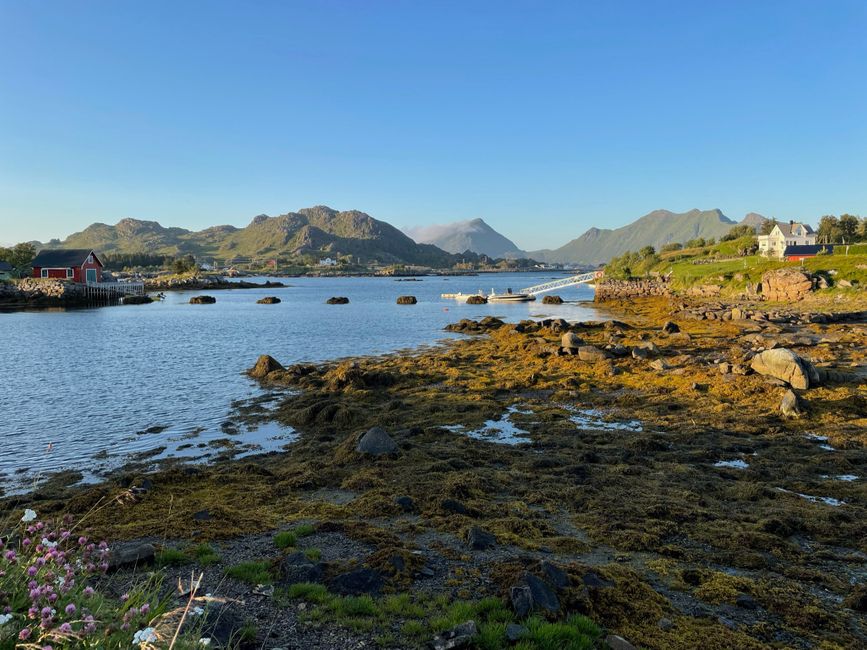
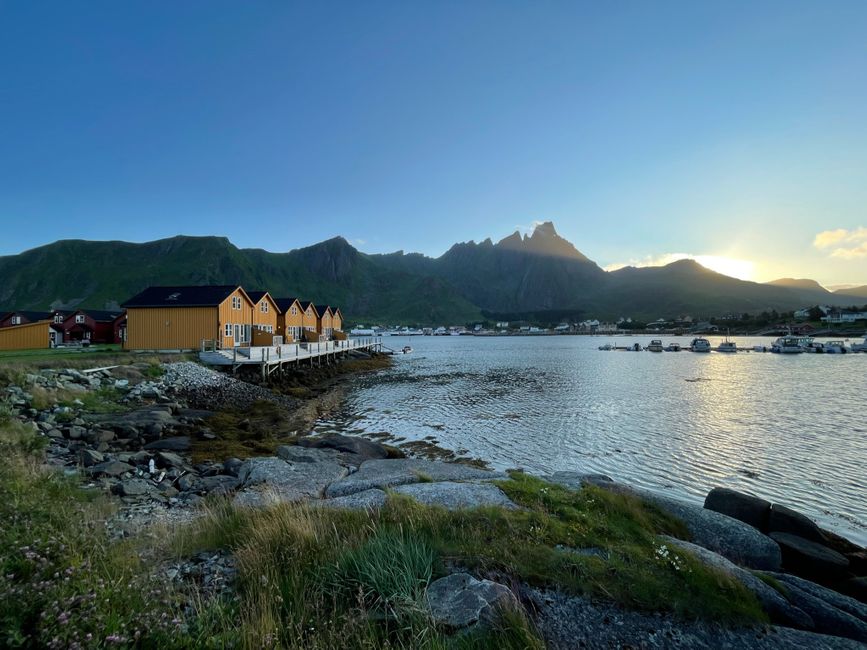
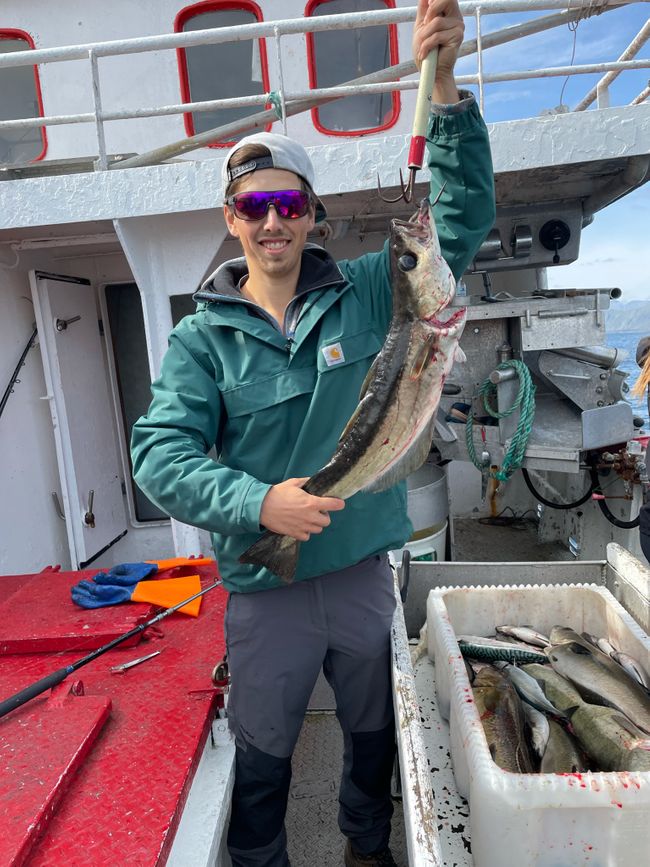
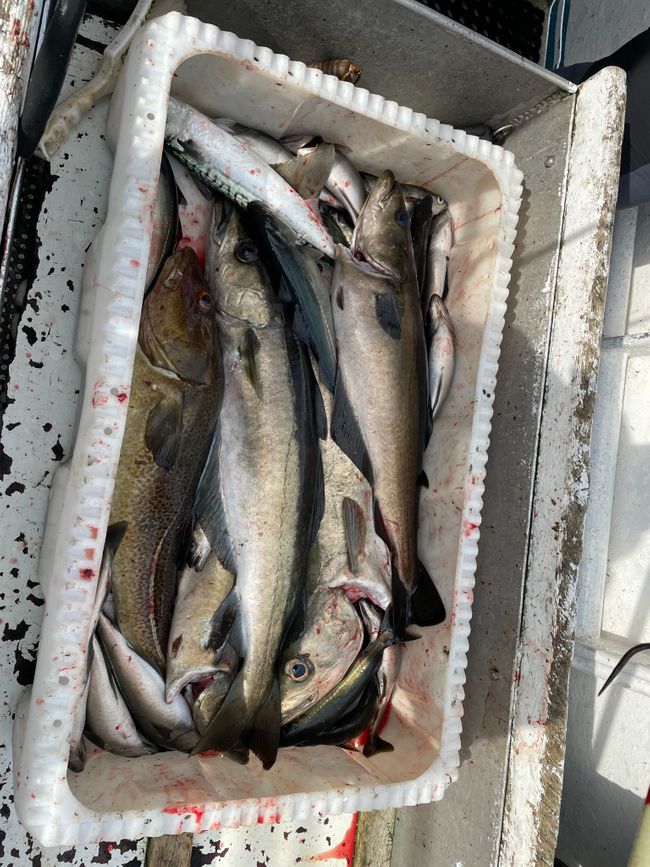
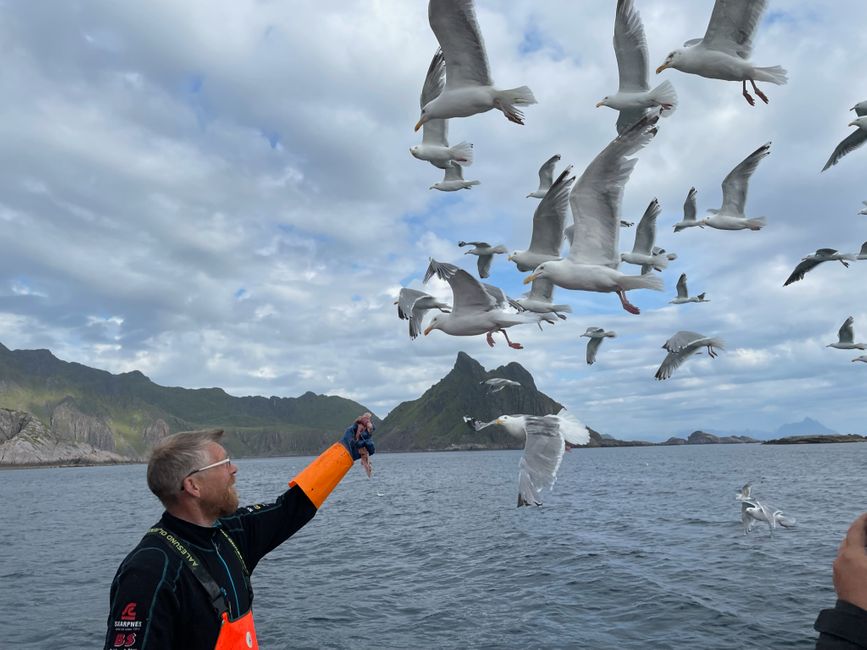
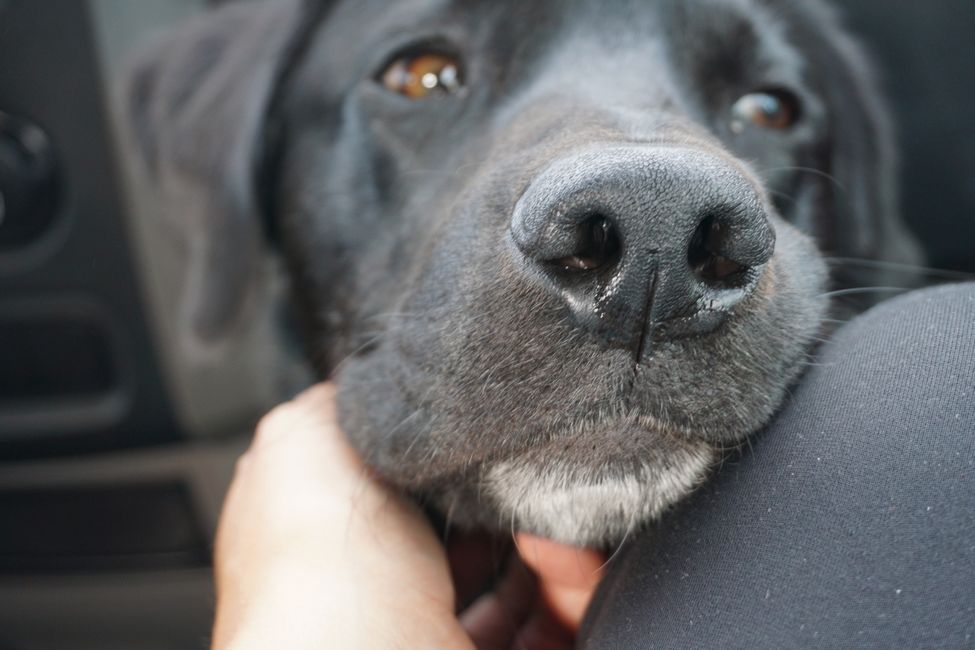
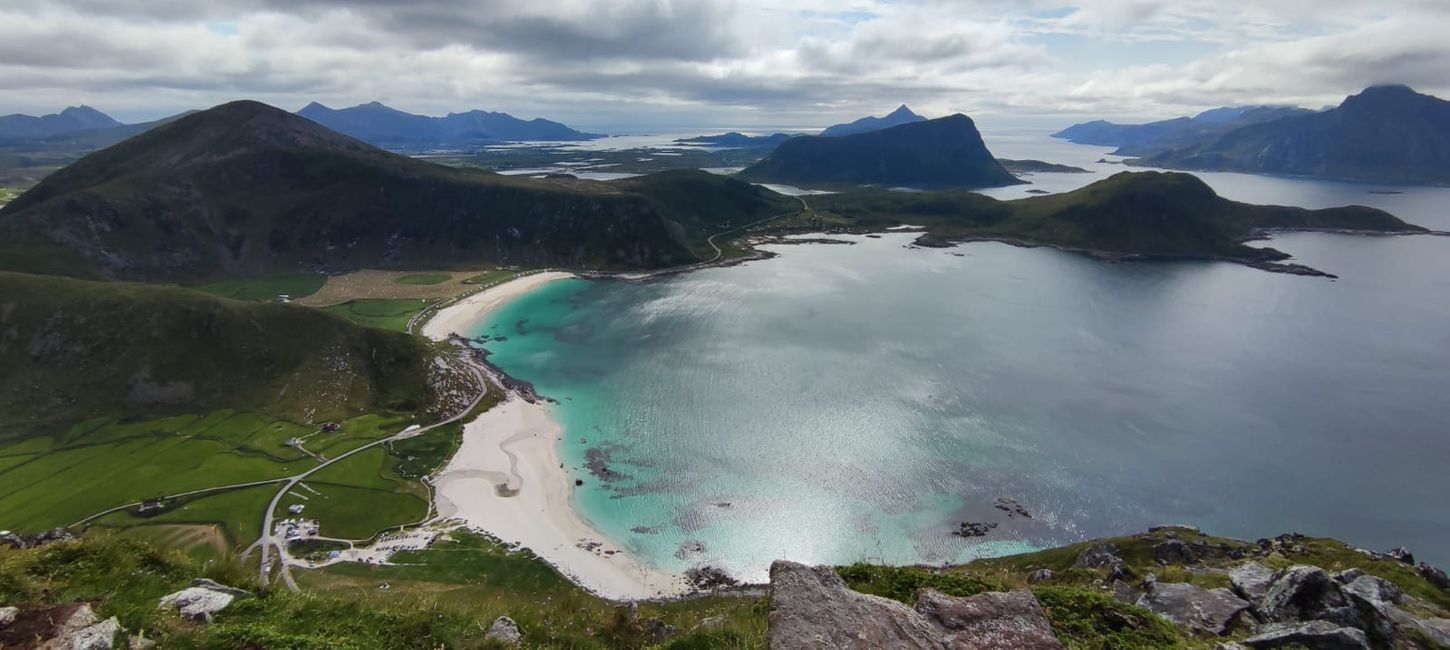
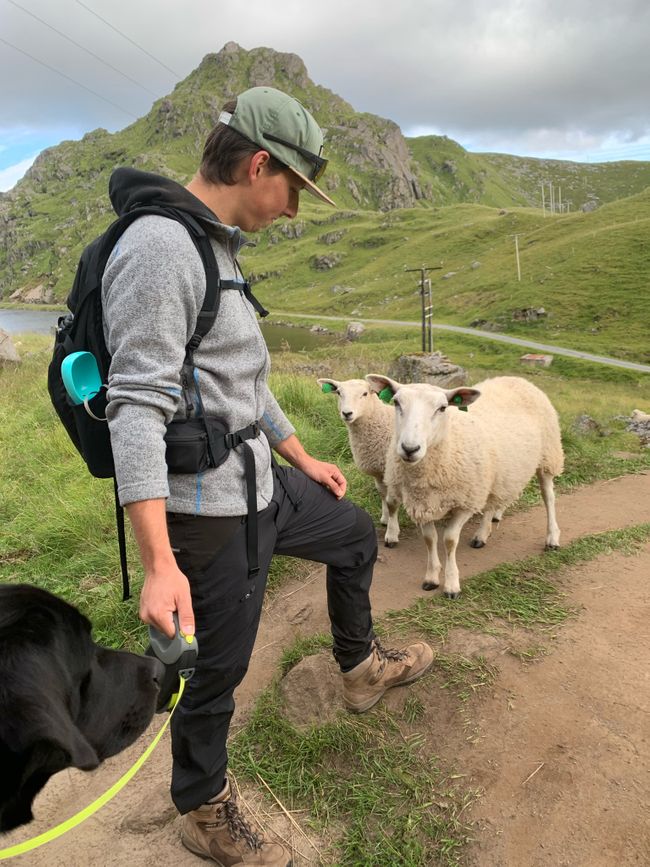
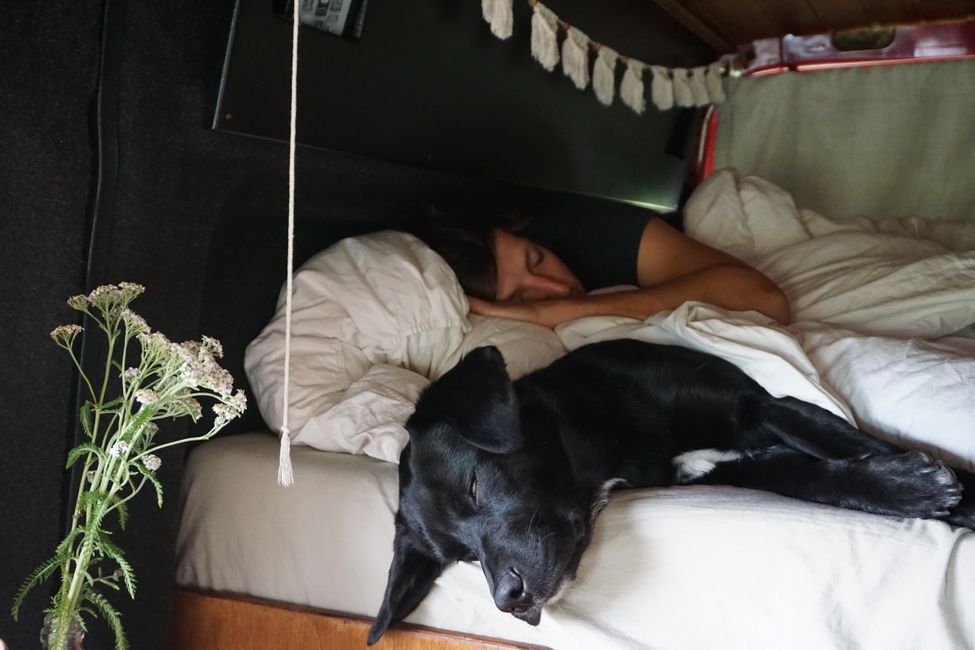
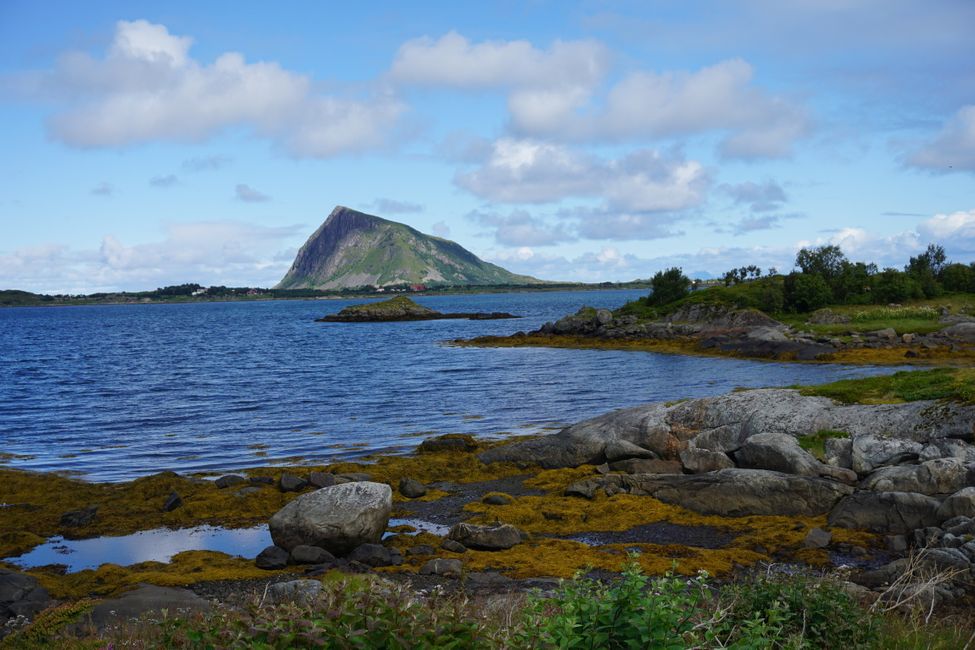
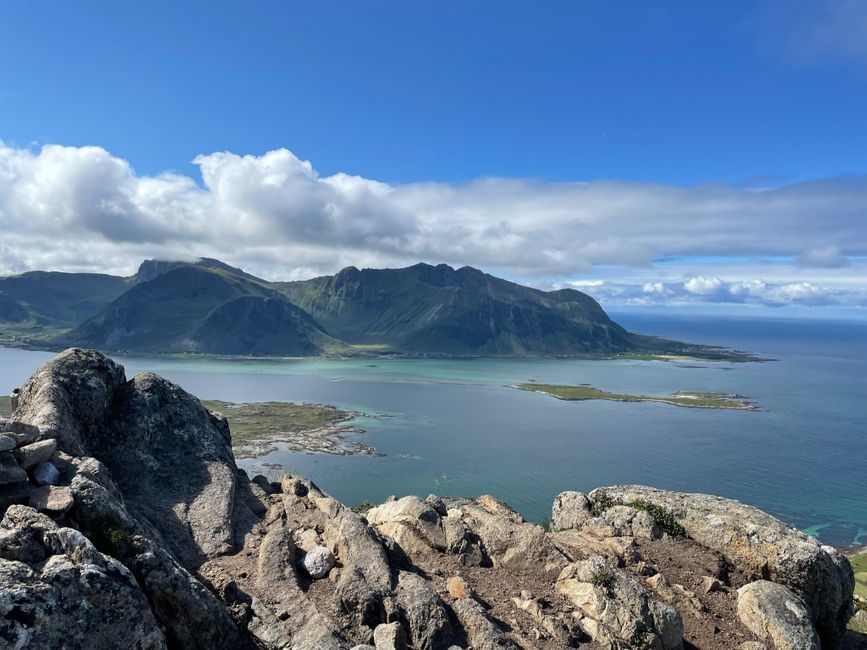
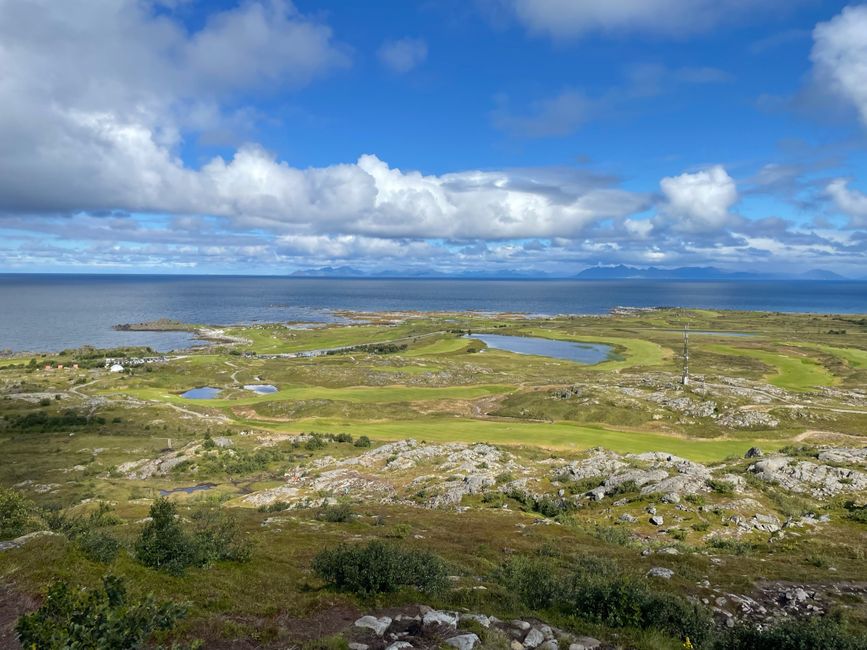
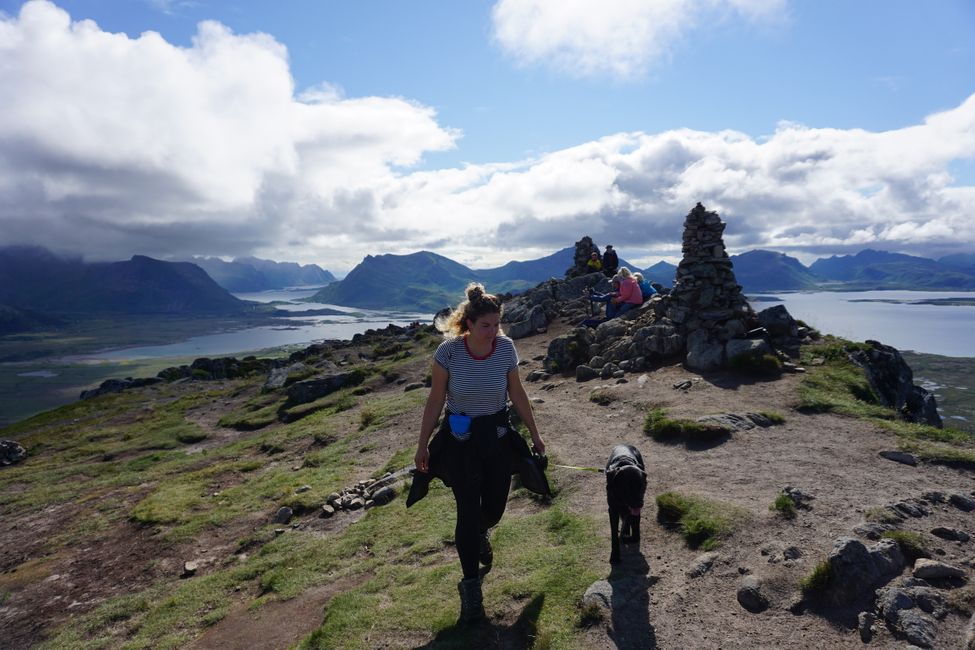
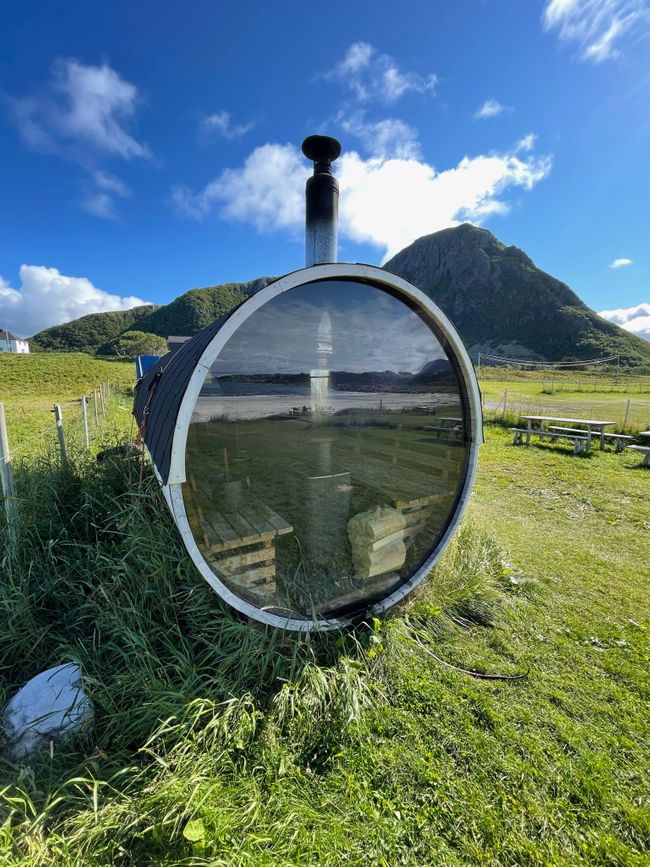
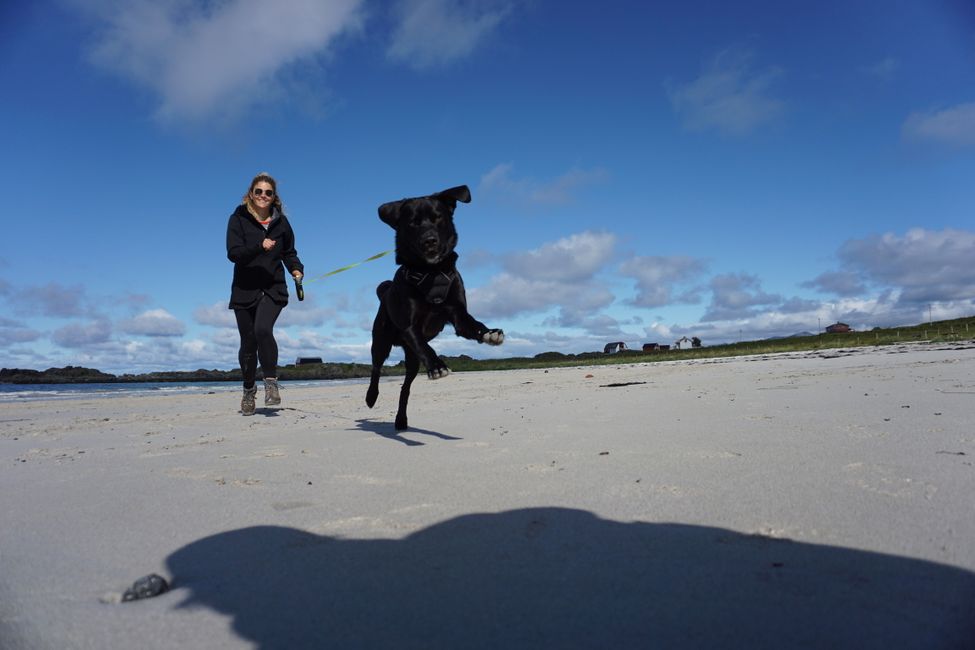
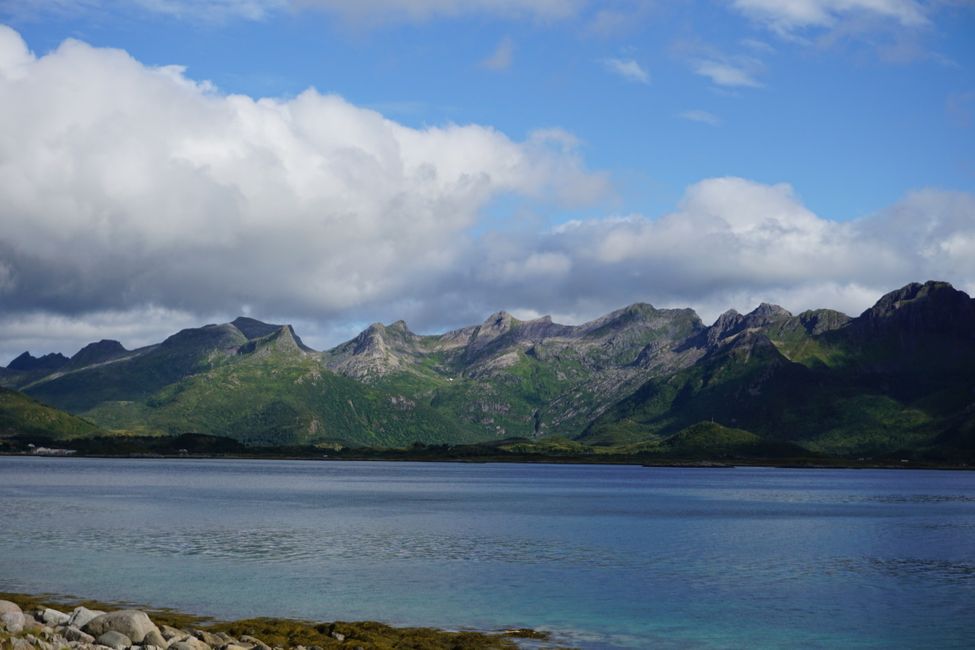
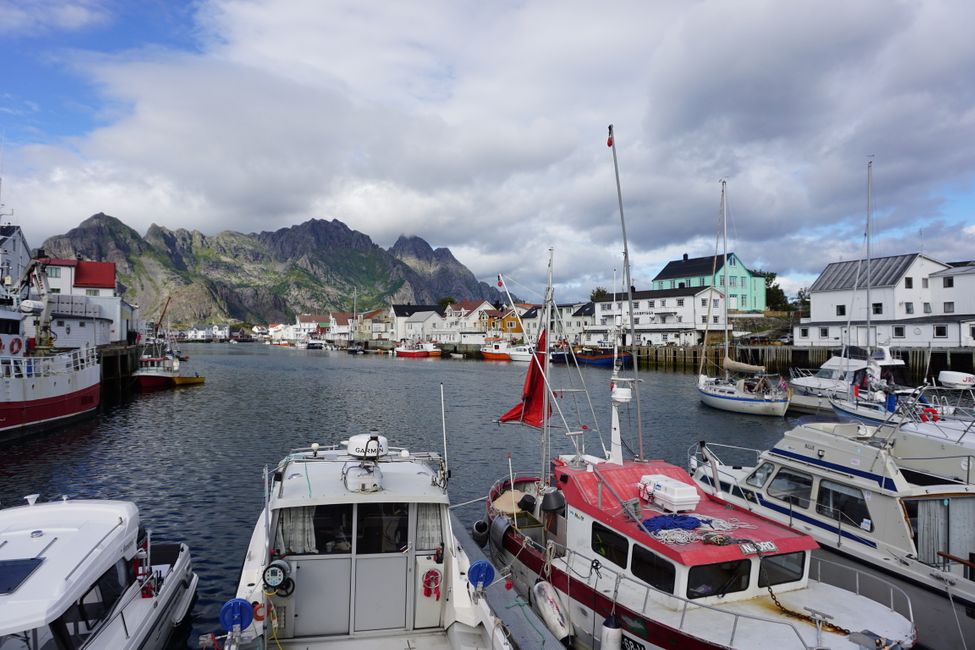
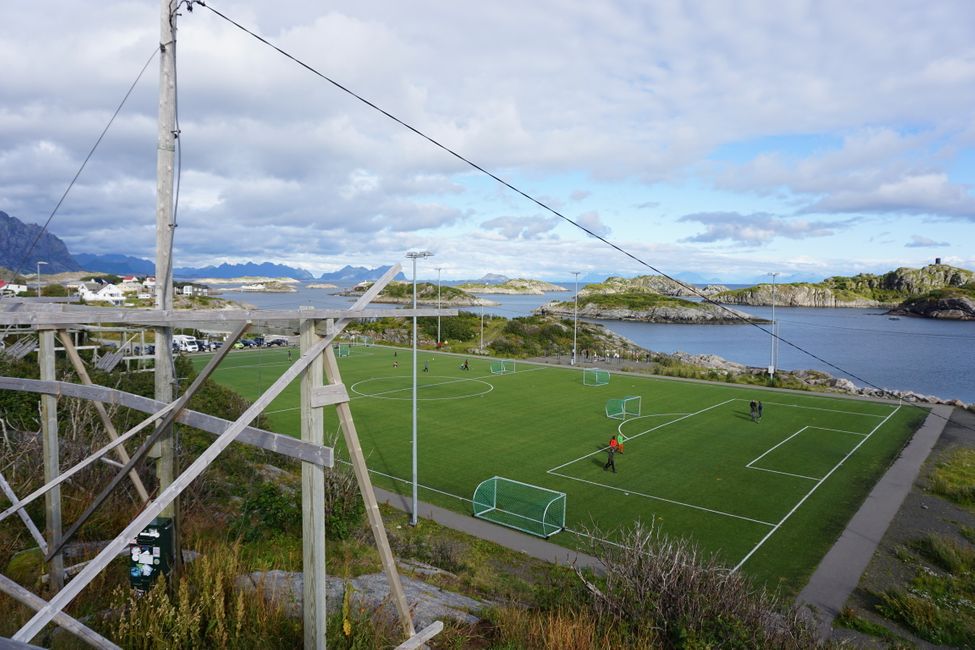
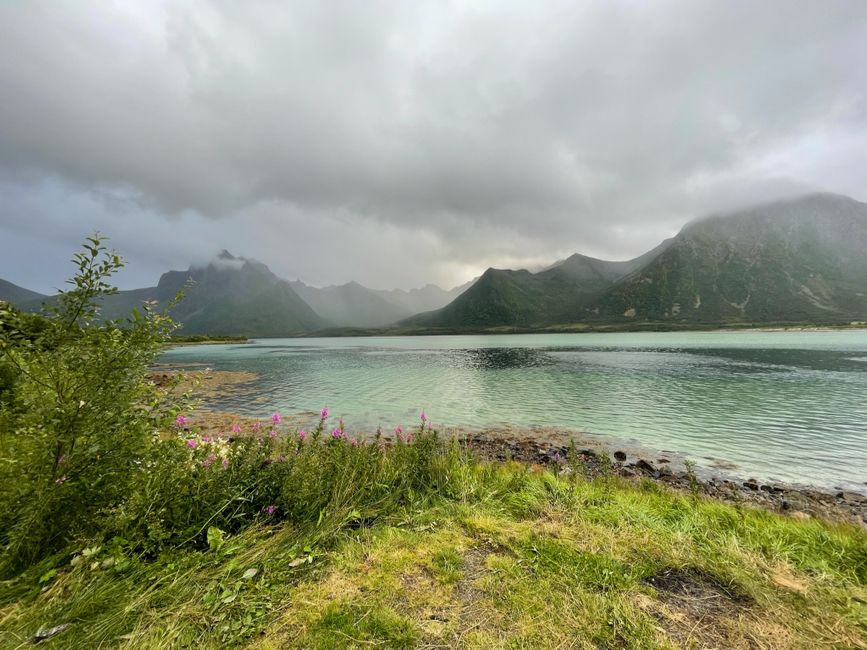
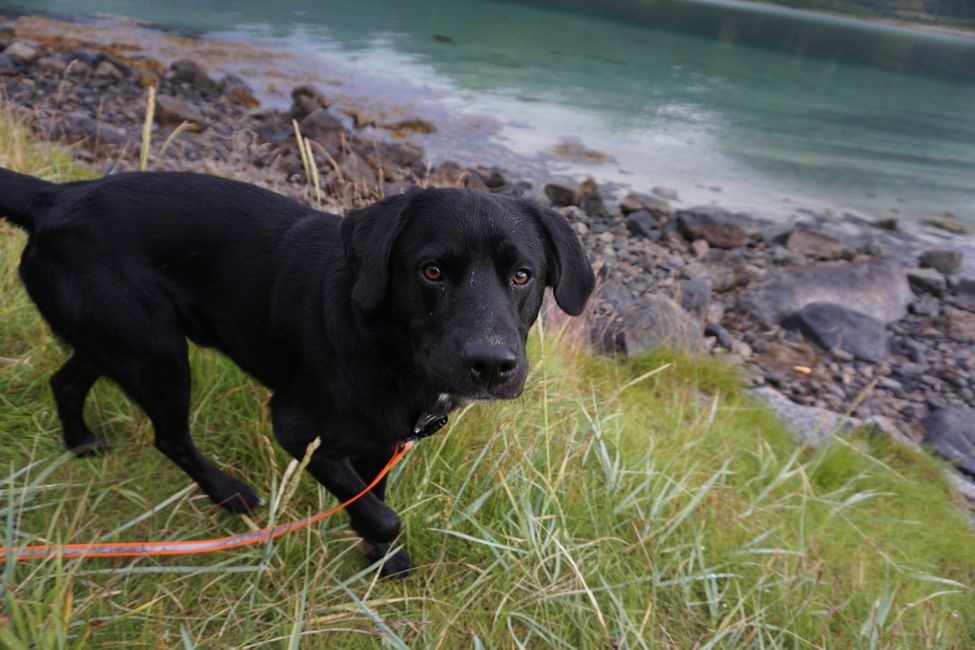
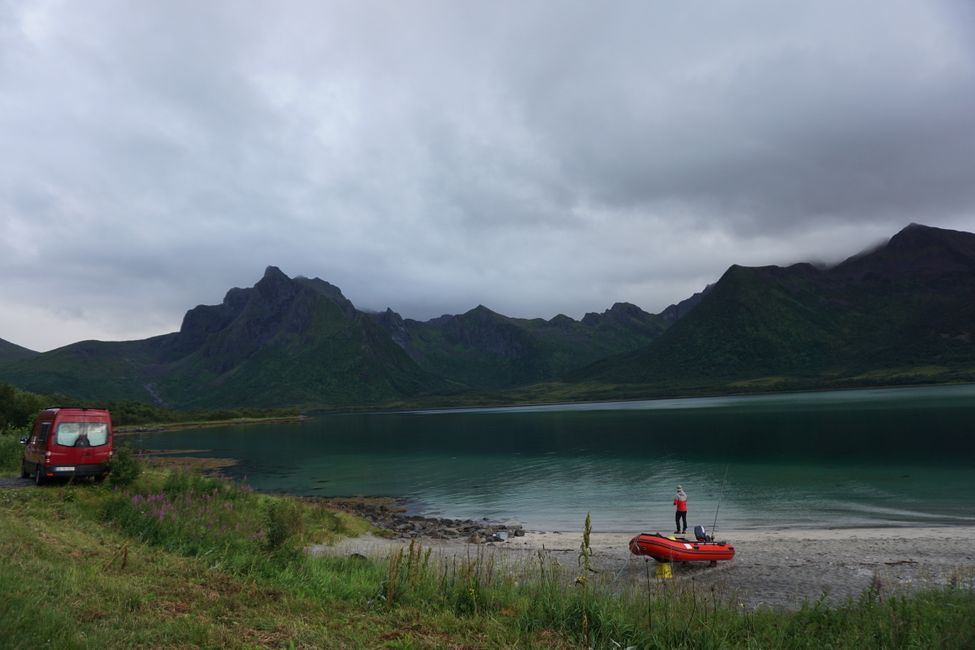
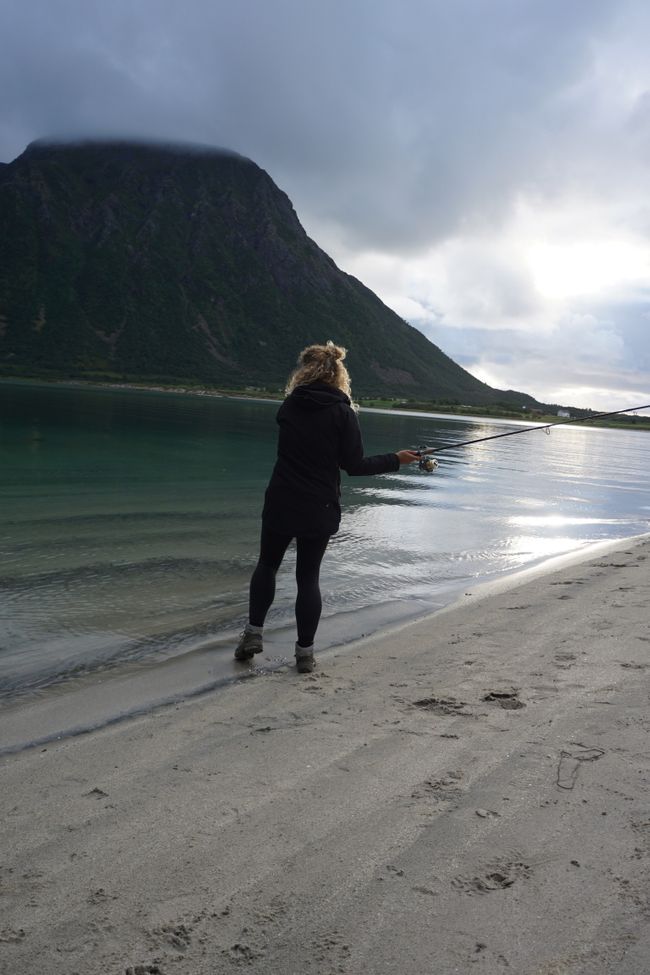
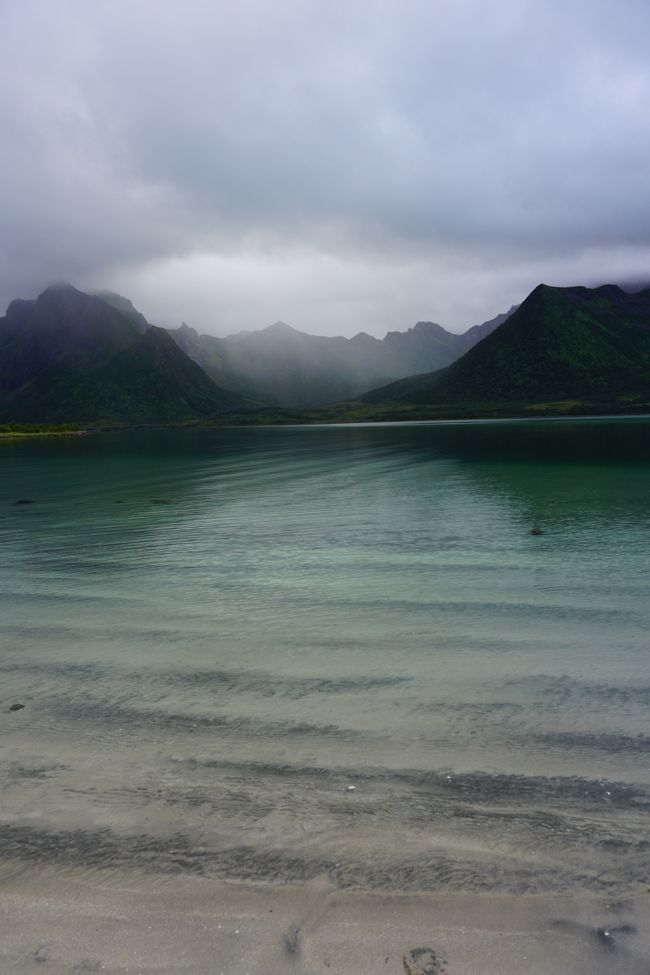
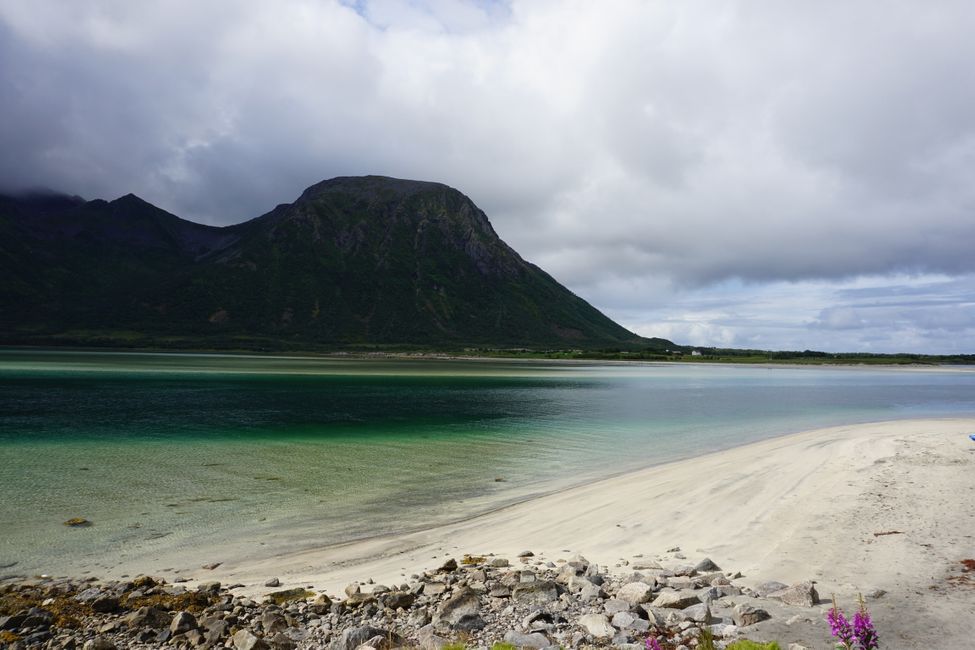
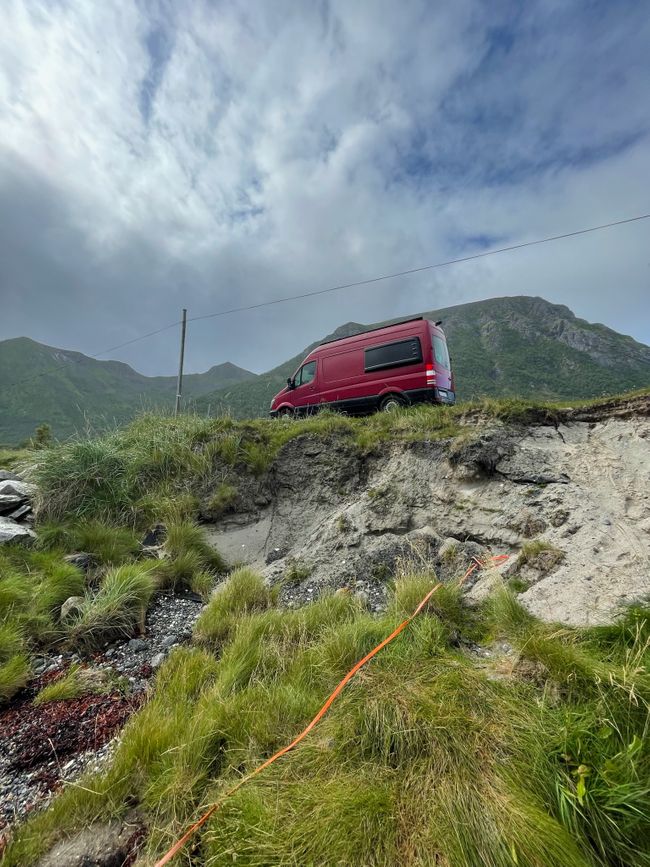
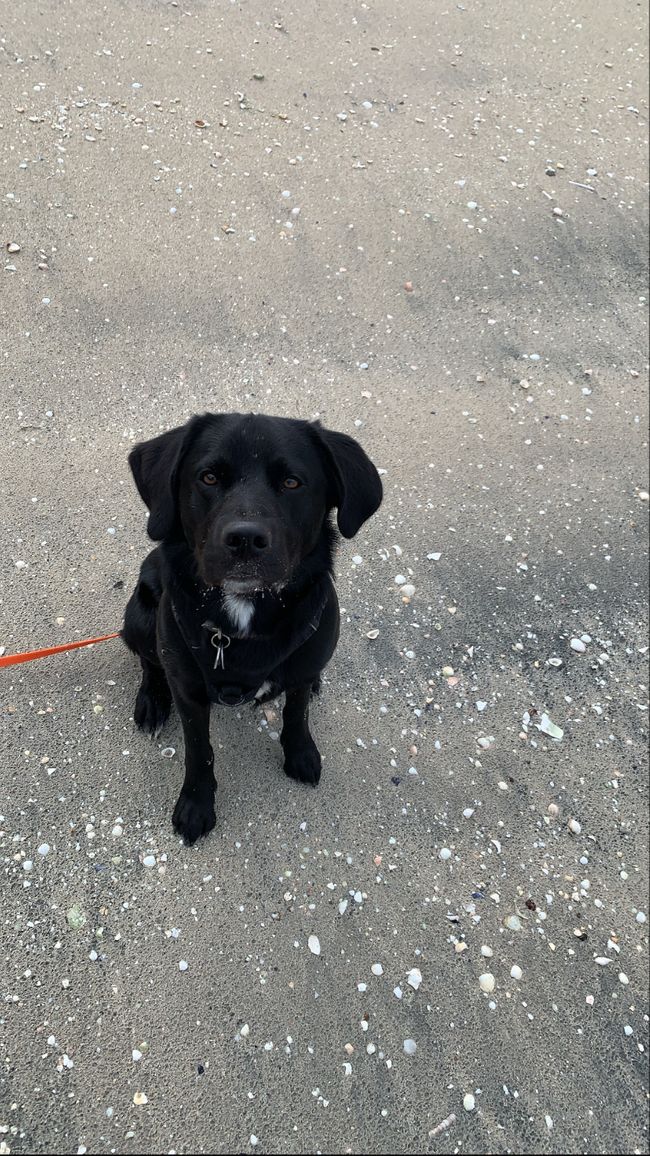
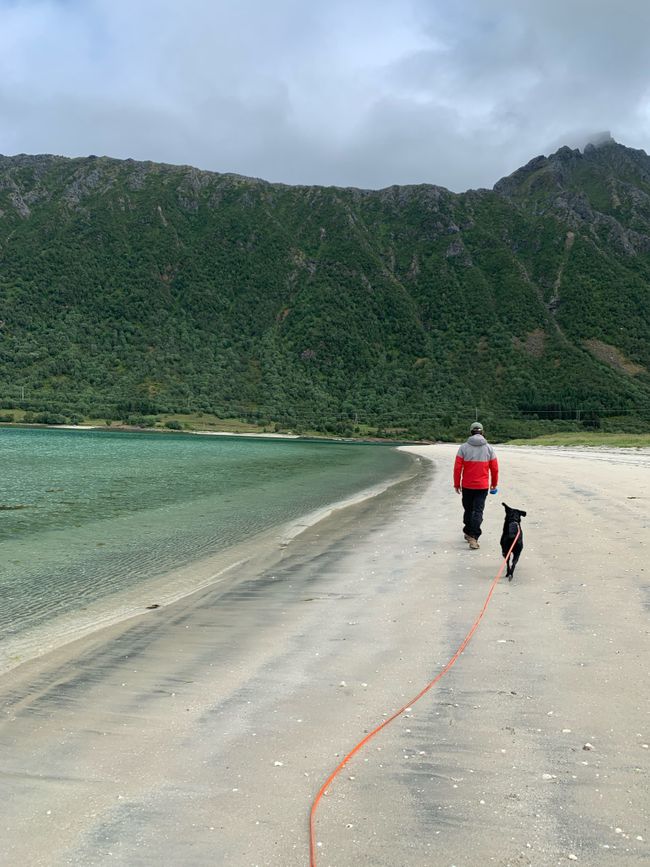
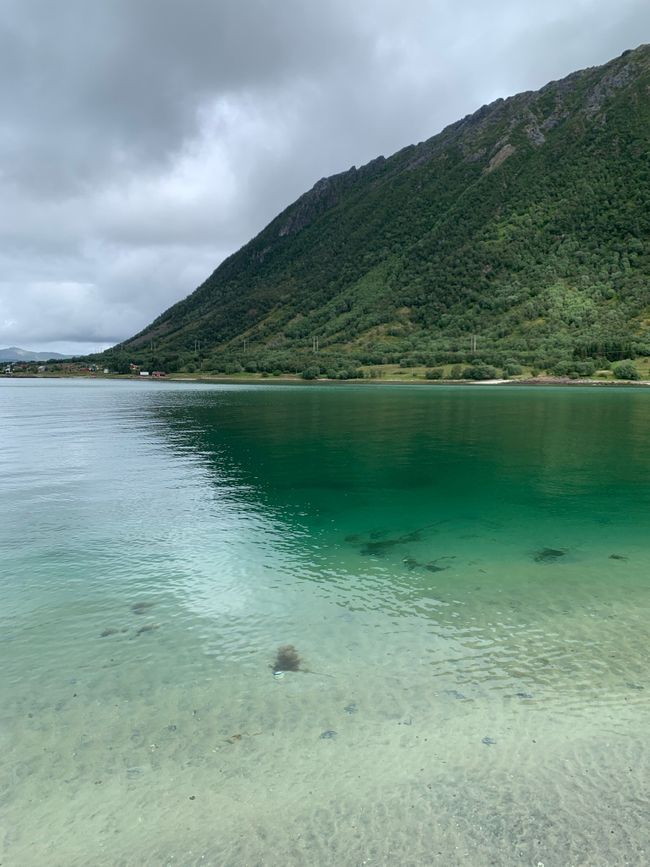
Abonner på nyhetsbrev
We are on the ferry. Phew, 7 o'clock - not our time anymore! On the parking deck, we get off with Fiete and want to go up, but see "no dogs allowed" signs everywhere. When booking the ferry tickets, there was no mention of dogs, so we didn't think about it further. Uncertain, we speak to a ferry employee, asking him where we have to go with Fiete. He just gestures "up". So, despite the prohibition signs, we continue and take another look around. Nowhere any indications. As a precaution, we first go out on the open deck. We quickly google for information. We quickly read on a travel blog that dogs either have to stay in the car, be in a loud "kennel room", or stay outside on the deck. Somehow none of these options are very satisfying for a 3 1/2 hour drive in bad weather. So, we ask again and are informed that these are old signs and it's okay to take Fiete upstairs. However, if we want to stay inside, he must go into one of the boxes, which are available upstairs. We grab one, place it next to our row of seats, and put Fiete in it. Thank goodness Fiete is used to dog crates and quickly relaxes in the situation and endures the 3 1/2-hour drive well, occasionally enchanting passing passengers with his dog eyes and wagging tail.
After about 15 minutes at sea, we notice that it's rocking quite a bit. Jannis throws the question into the room whether I pulled the handbrake and from then on, we have an uneasy feeling for the rest of the journey. The windowless doors to the parking deck are securely closed. No possibility to check. So, we have to wait and trust that I, as always, pulled the handbrake firmly. And of course - it was pulled and our RedRocket was still in place. Realistically, an employee probably would have said something if the van had rolled over the parking deck down there.
We arrive - hello Lofoten! - leave the ferry and head directly to the southernmost place with the shortest name "Å". The road ends in a large parking lot. It quickly becomes clear what kind of tourist rush to expect here normally. Again and again, we read in travel blogs, etc., that the Lofoten are supposed to be packed in the main season and the main road E10 is one big traffic jam of campervans. We are lucky because it's not busy - probably thanks to Corona!
Å is an old little fishing village with typical red houses on wooden stilts, the so-called Rorbuer, of which there are numerous on the Lofoten. The fishery and stockfish museum is a large part of the village Å, which unfortunately cannot be visited with a dog, so we treat ourselves to only the world's best cinnamon rolls. Yes, we were offered the "world's best" many times.
We regularly notice large wooden racks and wonder what they are used for. In the next village, we get an answer. Initially, there is a pretty fishy smell, then we see the wooden racks again, this time not empty, but filled with fish heads. The waters around the Lofoten are one of the fish-rich areas in the world. Between January and April is the main season for the "Skrei" (cod), which hangs in pairs on the wooden racks until summer to dry and become stockfish. Beforehand, they are beheaded and gutted. The heads are dried separately, most of which go to Nigeria and end up in the traditional fish soup there. Somewhere I also read that the tongues are removed beforehand and are considered a delicacy on the Lofoten. We don't pursue that, we don't have much interest in trying that.
But we still get to enjoy fresh cod. Jannis goes on a guided fishing tour one day. Fiete and I stay at home. Besides the fishing pleasure, there are also rough seas and nausea. But his fishing success makes up for that. Numerous fish are pulled out, including a pretty large cod (see photo). Jannis also brings home mackerel. We couldn't have fit anything more in our small refrigerator.
During the fishing trip, they also observe sea eagles. I'm almost a little jealous, but later we see some again from the shore. Impressive!
After our first day in the Lofoten was very rainy, it starts to clear up on the second day and from then on, we had incredibly lucky weather! Finally - sun in Norway! We soak it up, enjoy the sunshine and the warmer temperatures between 15-20 degrees. In the sun, it's pleasantly warm and on two days it's even enough for the beach and swimming in the North Sea. It's not exactly a leisurely swim, but we've become accustomed to the cold! However, Fiete still hasn't become a great swimmer. His leash and seaweed are indeed rescued from the water, but it's more panicky than joyful. We probably need to take another swimming course.
Beach in the Lofoten - if it weren't so cold, you could almost mistake it for white, turquoise Caribbean beaches. Incredibly beautiful! And next to the beaches, there are the mountains rising out of the water. A true natural spectacle!
We do several hikes up the mountains and enjoy the breathtaking views of the fjords, lakes, and surrounding peaks. It's truly breathtaking, but the height and steep slopes (a bit for Jannis too) are challenging for me. In addition, our adventurous dog who thinks he's a mountain goat and always stands one step too close to the edge. Not all tours are recommended with a dog here and we notice that.
Speaking of dogs - it's generally a shame that in Norway, and also in Sweden, leash laws apply everywhere and everyone seems to take it very seriously. Although we encounter many dogs, we can't just let Fiete off-leash and let him play. You can tell how much he misses that. His joy at seeing his best friend Filou in Bielefeld again will be even greater!
Our overnight parking spots are often larger roadside pullouts. This is simply because there is not much space in the Lofoten, at least on the first islands. Here, there are mainly mountains. You only find open land areas again on the northeastern islands. But it's not a big deal to stay at roadside parking spots, because we almost always have a fantastic view, and in the evening, you can feel the island becoming quiet. Sometimes we are a little annoyed that we didn't bring a tent and sleeping bag. Because what you also see a lot in the Lofoten are tents set up somewhere lonely on rocks. There are many places that can only be reached on foot after a long hike. So, a tip for everyone who plans to come here - pack a tent, sleeping mat, and sleeping bag!
Or hike to Kvalvika Beach and use the little hobbit hut that two guys built from driftwood on the beach in 2010 to spend a winter there. Their intention: "Surfing and living a simple life". If you're interested, you can read their letter (see pictures).
A picture-perfect evening - the sun turns the mountain peaks pink. We sit there, and I say to Jannis, "We've already seen so many animals, now it would be perfect if we could see whales!" And - I'm not kidding - less than 5 minutes later, we see fins gliding out of the water. Initially unsure if they are dolphins or porpoises, we do some research and conclude that they are porpoises. So beautiful! This was not the last evening on which we encountered them. Amazing! If you look closely at one of the pictures, you can see the fin gleaming out of the water ;)
Unfortunately, it's the wrong season for orcas, so we'll have to come back another time.
In addition to sea eagles and porpoises, we are also constantly accompanied by sheep on the Lofoten - it's just a thing here. A "baaah" can be heard from somewhere on the steep slopes, or you have to slow down because a small herd is standing on the road.
After 11 days, we decide that we should move on slowly. We have seen a lot, are infinitely grateful for this experience, and can only recommend coming here to anyone who is somewhat outdoor-oriented.
Our journey continues to the neighboring island of Senja. It's supposed to be similarly beautiful, but less touristy. We are curious, but probably won't explore it as extensively as the Lofoten, as the weather for the next few days doesn't look very promising. But we don't want to leave it behind either, now that we're here.
Abonner på nyhetsbrev
Svar (1)
Claudia
Wow, sitze gerade mit viel Zeit beim Doc und lese mit Vergnügen eure Reise-Berichte! Du schreibst toll, Maja, solltest du später irgendwie beruflich verknüpfen!
Ich wünsche euch weiter eine tolle Reise, bleibt gesund und glücklich 🤗😘
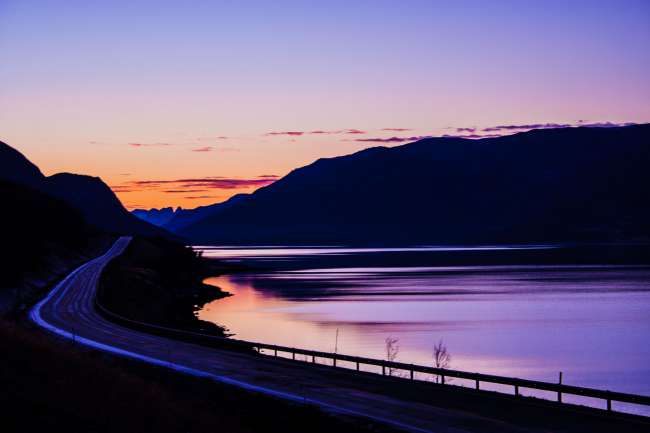
Reiserapporter Norge
